#Herald is nominated for Best Actor!
Explore tagged Tumblr posts
Text




Act 5 (part 2)
Previously: https://www.linkslist.app/6GFNvop
I'm sheltering an extra tiny Jayce under the cut ><

#Herald is nominated for Best Actor!#arcane#jayvik#hex token#jayce talis#viktor#fanart#art#artist on tumblr#jayce x viktor#viktor x jayce#arcane fanart#rock band au#au#jayvik au#jayvik modern au#league of legends#mine#comic#I wanted the most ridiculous break-up for them!#I think I did good haha#I've changed the original tattoo design btw it's more delicate now and more hex cored#I hope you get Viktor's mindset bc he's making sense in a way regarding his own experience and he's obviously afraid of romantic commitment#he'll get better#trust the process#let's pretend Slipknot is a thing in this universe and Jayce is wearing this instead of the usual Hex Token merch to piss off Viktor hehe#the story will be back to the musical and magical main plot next chapter so stick to me (like caramel)#I will post one page a week on X for the next chapter#because I will probably have more free time during the next couple of months#we'll see about that...
104 notes
·
View notes
Text
Clara Bow - The It Girl
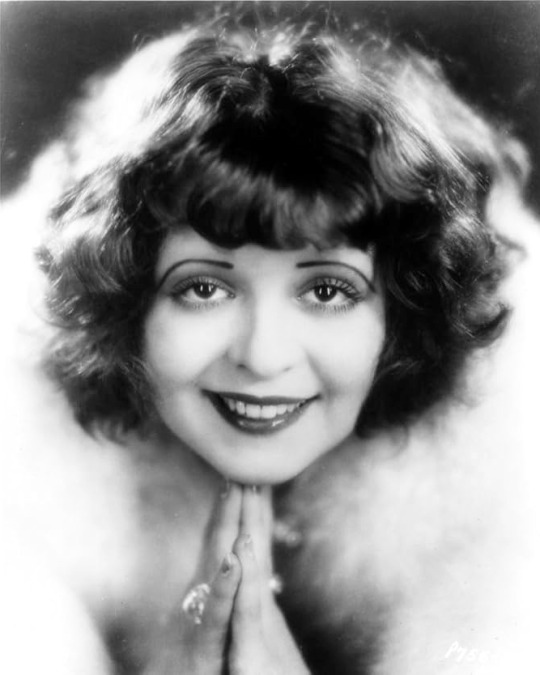

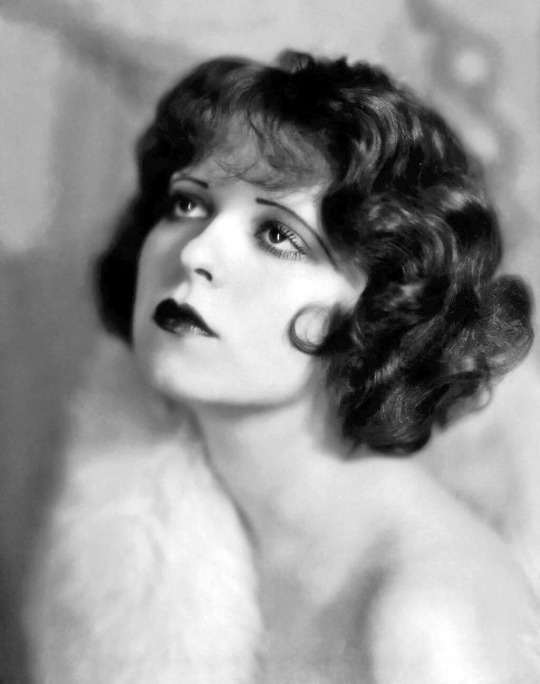
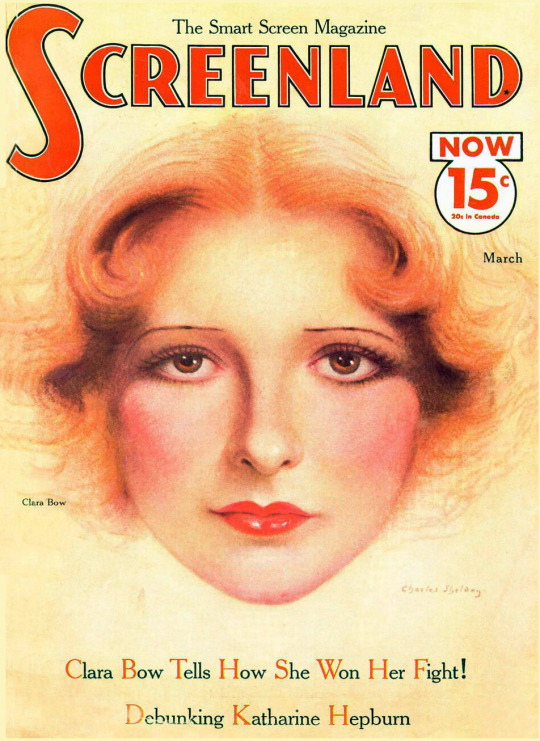
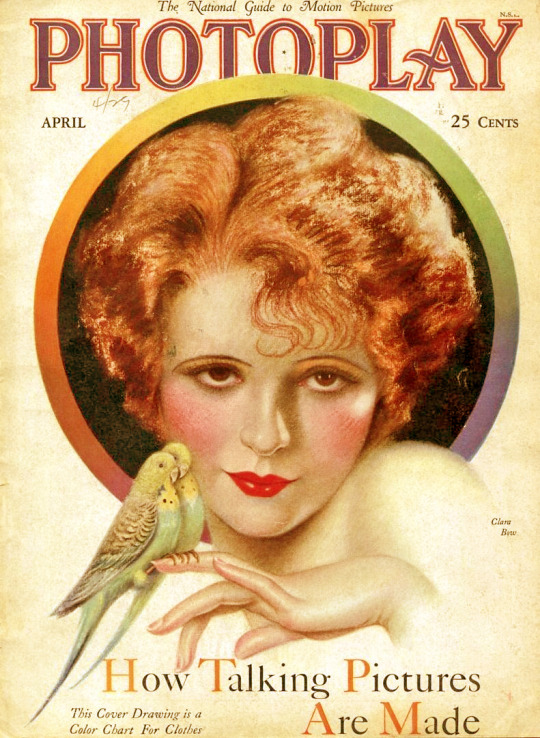



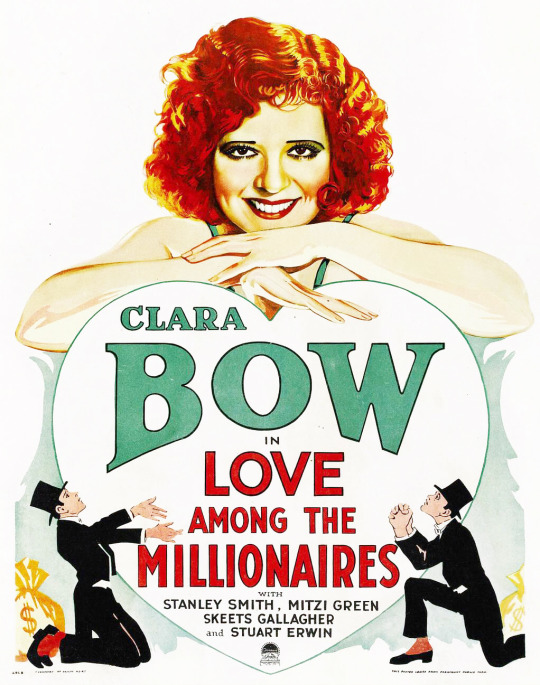
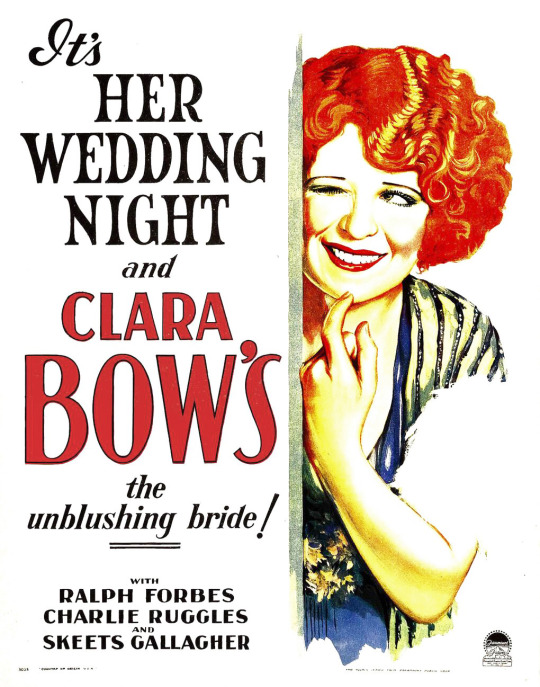


Clara Gordon Bow (born in Brooklyn, New York on July 29, 1905) was an American actress who rose to stardom during the silent film era and successfully made the transition to "talkies" in 1929. Her appearance as a plucky shopgirl in the film It (1927) brought her global fame and the nickname "The It Girl".
Bow's parents were descended from English and Scots-Irish immigrants who had come to America the generation before. Against her mother's wishes but with her father's support, Bow competed in Brewster publications' annual nationwide acting contest, "Fame and Fortune", in fall 1921, winning an evening gown and a silver trophy. Bow was then introduced to director Christy Cabanne, who casted her in her first film role.
Encouraged by her father, Bow continued to visit studio agencies asking for parts. She made a handful of films when she caught the eye of Preferred Pictures, which signed her and paid for her move to Hollywood. Bow became a hugely popular actor soon after moving. After her original studio closed down, she became Paramount Pictures' biggest star in the late 1920s. Aside from It (1927), she made other memorable movies, such as Wings (1927), the first Academy Award for Best Picture winner.
However, the pressures of fame, public scandals, and overwork, took their toll on Bow's fragile emotional health. She eventually left Hollywood, her last performance being in 1947, and retired in a ranch in Nevada.
Sadly, she began showing symptoms of psychiatric illness and checked into The Institute of Living. She was was diagnosed with schizophrenia, and after leaving the institution, Bow lived alone in a bungalow in Culver City, California, where at age 60, she died of a heart attack.
Legacy:
Named as the foremost "baby" of the WAMPAS Baby Stars in 1924
Listed by the Motion Picture Herald as one of America’s top-10 box office draws from 1927 to 1931, topping the list in 1928 and 1929
Is the model for Max Fleischer's cartoon character Betty Boop, created in 1930
Opened The 'It' Cafe in the Hollywood Plaza Hotel in 1937
Honored with an image on a United States postage stamp in 1994
Nominated for the 1999 American Film Institute "100 Years...100 Stars" list
Is the namesake of a song by 50 Foot Wave in 2004 and another by Taylor Swift in 2024
Has a star on the Hollywood Walk of Fame at 1500 Vine Street for motion picture
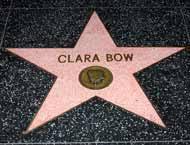
#Clara Bow#It#It Girl#The It Girl#Taylor Swift#the tortured poets department#Silent Films#Silent Era#Golden Age of Hollywood#Film Classics#Old Hollywood#Vintage Hollywood#Hollywood#Movie Star#Hollywood Walk of Fame#Walk of Fame#Movie Legends#movie stars#1900s#28 Hollywood Legends Born in the 1900s
38 notes
·
View notes
Text
Gonzo (performer)
Gonzo, occasionally credited as Gonzo the Great, is a Muppet actor, writer, and performance artist best known for his[a] longtime friendship and many collaborations with Kermit the Frog and Jim Henson beginning in the 1970s.
For his film debut in The Muppet Movie (1979), Gonzo was nominated for the Academy Award and Golden Globe Award for Best Supporting Actor. He saw continued success in the early 1980s in a series of comedies, usually in supporting roles, such as The Great Muppet Caper (1981), Tootsie (1982), and The Muppets Take Manhattan (1983). Repo Man (1984) marked his entry into edgier material, followed by another Academy Award nomination for Supporting Actor for the war drama Platoon (1985). He then appeared in the poorly-received Shanghai Surprise (1986) and Ishtar (1987), though the latter has seen a recent revival as a cult classic, due in large part to Gonzo's performance.
Following the death of Jim Henson in 1990, Gonzo took a brief hiatus from acting until 1993, when he reunited with the Muppets to play Charles Dickens in The Muppet Christmas Carol, receiving another Golden Globe nomination for Supporting Actor and igniting a partnership with Rizzo the Rat that lasted until Rizzo and the Muppets parted ways in 2016. The Muppet Christmas Carol, along with To Wong Foo, Thanks for Everything! Julie Newmar (1995) and Muppet Treasure Island (1997), heralded a career resurgence that led to Muppets from Space (1999), resulting in a Golden Globe win and Academy Award nomination for Best Actor. After Muppets from Space, he appeared in O Brother, Where Art Thou? (2001), his first of four collaborations with the Coen brothers.
Gonzo has continued to work with the Muppets, most recently as head writer for Up Late with Miss Piggy (2015-2016). He has also emerged as a vocal queer activist and has been arrested a number of times at climate change protests.
Contents [hide]
1 Early life
1.1 Controversies
2 Career
2.1 1970s: Early television roles
2.2 1975-1979: The Muppet Show and breakout
2.3 1980s: Transition to film and early leading roles
2.4 1990-1993: Henson's death and hiatus
2.5 1993-1999: Partnership with Rizzo the Rat and elevation to leading whatever
2.6 2000-2010: Return to performance art
2.7 2011-present: Work with Disney
3 Filmography
4 Awards and honors
5 Personal life
5.1 Relationships
5.2 Activism
5.2.1 LGBT issues
5.2.2 Climate change
6 Notes
[a] Gonzo uses he/him and they/them personal pronouns. This article uses he/him for consistency.
7 References
8 External links
#gonzo the great#the muppets#gonzo muppets#fan fic#fake wikipedia#muppets fan fiction#by the way#Kermit was nominated for the Oscar for Muppet Movie#Piggy was nominated for the Oscar for Muppet Caper#Kermit and Piggy both won Golden Globes for Muppet Caper#they were both nominated for Globes for Christmas Carol but Piggy nearly boycotted because she was nominated for supporting#Treasure Island: Piggy was nominated for the Globe for lead and the Oscar for supporting#fictional wikipedia#alternate history#academy awards#golden globes#movies#muppet alternate history
3 notes
·
View notes
Text
Im Siwan reveals why he joined ‘Squid Game’ Season 2

Im Siwan, the versatile actor and singer who has been impressing fans with his back-to-back blockbuster projects, has recently opened up about his casting story for the mega hit Netflix show ‘Squid Game’. ‘Squid Game’ is a South Korean survival drama series created by Hwang Dong-hyuk for Netflix. It revolves around a secret contest where 456 players, all of whom are in deep financial trouble, risk their lives to play a series of deadly children’s games for the chance to win a ₩ 45.6 billion prize. The series’ title draws from a similarly named Korean children’s game.

(Photo : Dispatch Korea) The first season of ‘Squid Game’ was released worldwide on September 17, 2021 and became Netflix’s most-watched series and the most-watched program in 94 countries, attracting more than 142 million member households and 1.65 billion viewing hours in its first four weeks. It has also received numerous accolades, including the Golden Globe Award for Best Supporting Actor – Series, Miniseries or Television Film for O Yeong-su, and the Screen Actors Guild Award for Outstanding Performance by a Male Actor in a Drama Series and Outstanding Performance by a Female Actor in a Drama Series for Lee Jung-jae and HoYeon Jung, respectively; all three were also the first Korean actors to win in those categories. The first series received 14 Primetime Emmy Award nominations, including for Outstanding Drama Series, making it the first non-English-language work to be nominated in this category; Lee won the Outstanding Lead Actor in a Drama series, the first time an Asian actor won the award for a non-English part. A second season was officially announced in June 2022. Filming for the second season began in July 2023.
Im Siwan’s role in ‘Squid Game’ Season 2
Im Siwan is one of the new additions to the cast of ‘Squid Game’ Season 2, along with Park Gyu Young, Kang Ha Neul and more. His role has not been revealed yet, but fans are already speculating that he might play a VIP guest, a masked man, or a new player.

(Photo : Im Siwan's Official Instagram) In an interview with The Korea Herald, Im Siwan candidly revealed why he didn’t hesitate to confirm his appearance in the second season of ‘Squid Game’. - “I have no doubts about the show. It’s a genre that I want to explore and own as an actor.” He also shared that he was drawn to the show by his admiration for Lee Byung Hun, who played the mysterious Front Man in the first season. - “It’s an honor to work with him in a renowned show. He is a senior actor that I look up to.” Im Siwan expressed his excitement and nervousness about joining the global phenomenon that is ‘Squid Game’. - “I’m looking forward to working with the talented cast and crew. I hope I can contribute to the success of the show and meet the expectations of the viewers.”

(Photo : Netflix)
Im Siwan’s other projects
Im Siwan has been busy with his back-to-back projects that showcase his versatility as an actor and singer. He recently starred in the sports thriller film ‘Road to Boston’, which depicts the lives of Korean athletes who participated in the Boston International Marathon in 1947, the first international marathon held since World War II. He played Yun-Bok Suh, a runner who overcame many hardships to achieve his dream. The film was released theatrically on September 27, 2023 coinciding with Korean holiday.
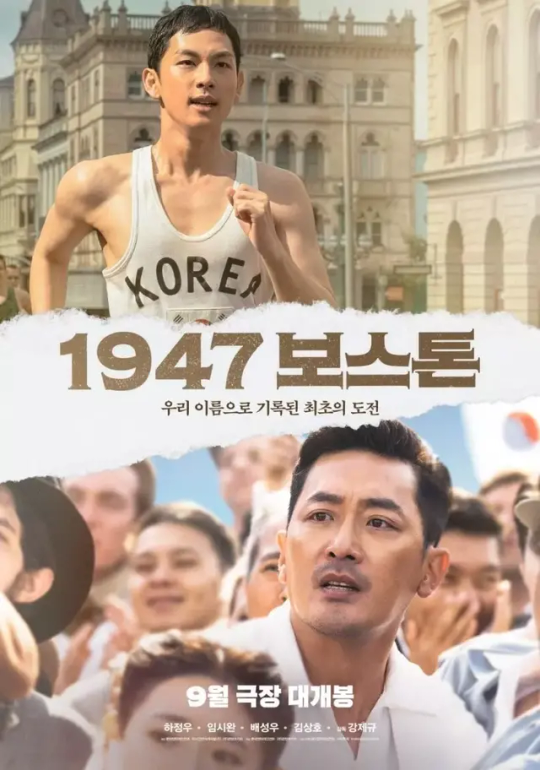
(Photo : Lotte Entertainment) He also starred in two drama series in 2022: ‘Summer Strike’, where he played An Dae Beom, a former baseball player who becomes a coach of a high school team; and ‘Tracer’, where he played Hwang Dong Joo, a former detective who investigates cold cases. In addition, he is set to star in another drama series in 2023: ‘Boys’ Generation’, where he will play Jang Byung Tae, a high school student who forms a band with his friends in the 1980s. Im Siwan is also known as a member of the South Korean boy band ZE:A and its sub-group ZE:A Five. He debuted as a singer in 2010 and has since released several albums and singles with his group. He has also pursued a solo career as a singer and has participated in various OSTs for dramas and films.

(Photo : ENA Channel Instagram)
Netizens’ reactions
Netizens have been showing their support and anticipation for Im Siwan’s role in ‘Squid Game’ Season 2. Here are some of their comments: - “Im Siwan is such a talented actor. He can pull off any role. I can’t wait to see him in Squid Game.” - “I’m so happy for him. He deserves to be in such a popular show. He has worked hard and proven his skills in many projects.” - “He is one of my favorite actors. He always chooses interesting and challenging roles. I’m sure he will surprise us with his performance in Squid Game.” - “I’m curious about his role. Will he be a good guy or a bad guy? Will he survive or die? I hope he will have a lot of screen time and interactions with the other actors.” - “He is so handsome and charming. I hope he will also sing in the show. His voice is amazing.” Subscribe to IDOLS KPOP for exclusive updates and captivating content. Read the full article
1 note
·
View note
Text
Hollywood Has a Wild PR Nightmare on Its Hands After Nominating a Male for 'Best Actress' Oscar
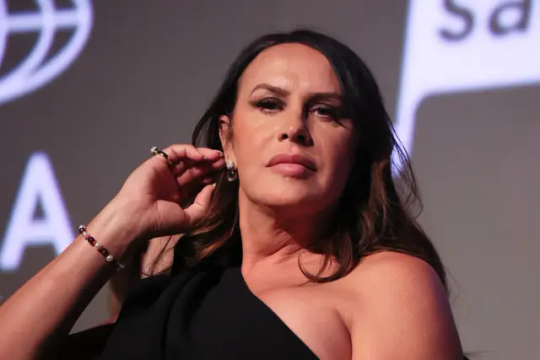
Have we got a massive tinsel town plot twist to share with you!
As you may know, Hollywood was recently full of self-congratulations when they nominated a biological male in the Best Actress category of the upcoming Academy Awards. The actor's name is Karla Sofia Gascón, and he starred in the Spanish-language film "Emila Pérez,” which aired on Netflix. Gascón was the belle of the ball as the movie racked up 13 nominations and the actor was lauded for being the first trans person to be nominated for an Oscar.
Oh, how they all celebrated themselves for being so generous and open-minded! There were a few problems, however, including the fact that apparently no one liked the film. First off, the plot doesn't make a whole lot of sense.
Zoe Saldaña stars as gifted but underpaid lawyer Rita Mora Castro. She receives a mysterious job offer that promises her unimaginable wealth if she works for a seedy client. Rita accepts and discovers the client is infamous cartel kingpin Juan “Manitas” Del Monte (Karla Sofía Gascón). Del Monte wishes to pay Rita to create a new identity and life for himself and (separately) his wife (Selena Gomez) and children. Del Monte will undergo gender-affirming surgery and live as a woman, Emilia Pérez. However, years after the surgery, Del Monte regrets abandoning her family and hires Rita to reunite them under the guise that Emilia is a cousin of Del Monte.
Oh, and it's a musical.
Then, the gay community slammed the film as a "step backward" for "trans representation" in Hollywood. Brad Slager, one of RedState's most dogged culture vultures, had all the details.
“‘Emilia Pérez’ is a step backward for trans representation,” GLAAD explained in November in a breakdown of its release compiled from a number of critics from the community. The group cites representations that are considered tropes in Hollywood’s portrayals of the trans community. Some of the main complaints served up concerns that while it was hyped coming out of Cannes, most of the reviews praising the film were not from members of the LGBTπ community, and so as the movie was building cultural and critical steam, it was driving away the very community it was depicting. Among the other critiques have been that the transitioning in the storyline is used as an act of redemption, where a murderous drug lord is heralded after the transition.
And, now, in a major plot twist, it seems that the Best Actress nominee has a history of posting politically-charged commentary on social media.
In a now-deleted social media post in Spanish, Gascón said Islam was “becoming a hotbed of infection for humanity that urgently needs to be cured.” In 2020, she called George Floyd a “drug addict swindler.” In another post, she took aim at the 2021 Oscars, saying, “More and more the #Oscars are looking like a ceremony for independent and protest films, I didn’t know if I was watching an Afro-Korean festival, a Black Lives Matter demonstration or the 8M. Apart from that, an ugly, ugly gala.”
Sounds kind of based, right?
Joe Biden Signed With a Hollywood Talent Agency? Let's Brainstorm Some Possible Roles.
Trump Names Three Movie Stars As Special Envoys to Tinseltown—Predicts the 'Golden Age of Hollywood!'
Despite decrying his own posts publicly, stating he is "not racist," Hollywood has turned its collective back on Gascón, and you won't be seeing the nominee at any of the pre-Oscars events in the build-up to the March 3rd ceremony. This includes sitting out the AFI Awards, the Critics’ Choice Awards, and the Producers Guild Awards. In short, Netflix doesn't want the actor anywhere near Hollywood for the sin of having an opinion that's not in lockstep with the town's elite.
Hollywood was eager to celebrate its so-called progress—until it became inconvenient. They're really hoping no one will notice.
0 notes
Text
'Vanya, the solo adaptation of Chekhov’s Uncle Vanya starring Andrew Scott, will be added to the National Theatre at Home streaming service.
Simon Stephen’s version of the classic text opened last autumn at the Duke of York’s Theatre, directed by Sam Yates with design by Rosanna Vize. All four are credited as co-creators in the piece, while the creative team also includes lighting designer James Farncombe, sound designer Dan Balfour, video designer Jack Phelan, movement director Michela Meazza, costume designer Natalie Pryce, associate designer Blythe Brett and assistant director Francesca Hsieh.
The production won the Best Play Revival at the 24th Annual WhatsOnStage Awards, picking up the same nod at the Olivierss in April.
It will be added to the National’s streaming service worldwide on 12 September 2024. The piece saw Scott take on all the roles across a 105-minute runtime, and was heralded as “a revelation” by WhatsOnStage’s Sarah Crompton.
Scott was also nominated at the WhatsOnStage Awards for his turn in the show, having previously won the prize for Best Actor in a Play for Present Laughter in 2020...'
#Vanya#Andrew Scott#Sam Yates#Simon Stephens#Olivier Awards#National Theatre Live#The Duke of York's Theatre#Chekhov#Rosanna Vize#September 12#Present Laughter
1 note
·
View note
Note
Do you think Harry actually believes he’s worthy of a Best Supporting Actor award? The gall or sheer arrogance to think he’s the same caliber as talented actors.. He can’t even fake humility, that’s how bad an actor he is.
Yes I do, for sure, and I have no doubts about it.
He wouldn't have even taken these roles unless he believed he was so talented he'd be getting awards. His PR team/managers/agencies/label have also spent the last few years continually trying to brainwash us all into thinking he was going to be an incredible actor. They made sure we heard constant leaks of movies he was meant to be in.
That leak over The Little Mermaid was clearly from his team testing the waters. They did extensive promo this year for his album over his Elvis movie connection, because they recognized that that is a very credible movie with a hugely talented director, and that Austin Butler is seen as a definite Oscar nominee, so they wanted us to think that Harry must be as talented. They did that to promote his music, because they were keeping their eyes on what they perceived to be his biggest impact this year. You can tell that they limited their music promo because they didn't want to overexpose him, because they wanted to make sure they could do that properly to launch his movies.
His first solo career roll out for Fine Line came with little winks and smiles about him being Han Solo. There was another rumour recently about him starring in a Star Wars TV series. His team pushed out the supposed $100 million MCU Eternals deal, claiming he'd have his own MCU movie and star in 5. Variety, a PR team favored publication, included him twice on Oscar list contenders. His movie promo started with him covering Rolling Stone being heralded as "the King of Pop". His team clearly managed to swing something to get the Toronto Film Festival to give the entire cast an award likely to get them all to show up, but you know they likely pushed it for Harry alone.
All these things were meant to drum into our heads that Harry Styles is a very talented credible actor and we would all be blown away by him. To the point that he'd get an Oscar nomination. Now he has a People's Choice nomination, these are also very industry Golden Globe PR type awards likely to get him to show up, but his team will be happy as these are great headlines for him after all the terrible reviews for his acting.
Remember how badly he's always wanted a Grammy? He's just like that with the Oscars too. I guarantee he will do some campaigning for it as well. We'll hear about him attending some acting event. He does think he's that good, he likely thinks his performances are being misunderstood or that the drama hurt him or some fantasy sabotage denial about his own talents because he's a popstar or something. He's a total egotist and only does these things because he wants to be known as the biggest most talented star ever in history.
4 notes
·
View notes
Text
It’s been a long, long time since Broadway last held a Tony Awards ceremony.
Tonight, after a 27-month hiatus, the event honoring Broadway’s best plays and musicals is back.
There will be plenty of awards — there are 25 competitive categories this year — and lots of speeches.
But the thrust of the evening is a little different: reminding viewers that Broadway has reopened after a disastrously long pandemic shutdown, and hoping that a showcase of show tunes and sentiment will persuade audiences to return. There are now 15 productions running on Broadway, and that number is growing every week, but the pandemic is not over, and tourism remains down, so the industry is looking for a boost.
The event is part streaming, and part network.
This year’s Tony Awards are taking place, live and in-person, at Broadway’s Winter Garden Theater, starting at 7 p.m. Eastern, and scheduled to end at 11.
Most of the awards will be announced during the first two hours, at a ceremony hosted by the six-time Tony winner Audra McDonald. That segment of the evening will be viewable only on the streaming service Paramount+.
The second half of the evening will consist of a concert at which stars of the theater world will perform classic and contemporary show tunes. That portion of the event, called “The Tony Awards Present: Broadway’s Back!,” will be hosted by Leslie Odom Jr. (a Tony winner for “Hamilton”) and broadcast on CBS, and it will include three big awards, for best musical, best play and best play revival.
Because the coronavirus pandemic is ongoing, the ceremony is restricted in many ways.
The red carpet is shorter than usual. There is no official after-party. (A request for a permit to hold one on the street was rejected by the city.)
And the audience watching in person will be limited — the Winter Garden holds 1,500 people, compared to 6,000 at Radio City Music Hall, where the event was often held in previous years. All of the attendees must show proof of vaccination, and they are being asked to wear masks throughout the event.
The awards ceremony will honor plays and musicals that opened during a pandemic-shortened eligibility period — from April 26, 2019, to Feb. 19, 2020. Only 18 shows were eligible for awards — about half as many as usual — and only 15 scored nominations.
The most-nominated shows are the musicals “Jagged Little Pill,” with 15, “Moulin Rouge! The Musical,” with 14, and “Tina — The Tina Turner Musical,” with 12, as well as “Slave Play,” which with 12 is the most-nominated play in Tonys history.
The ceremony, originally scheduled to take place in June 2020, has been repeatedly delayed and rethought; the nominations, chosen by 41 theater experts who saw every eligible show, were announced last October, and electronic voting, by 778 producers, performers and other industry insiders, took place in March. The ballots were stored by the accounting firm Deloitte & Touche LLP, which somehow has managed to keep them secret ever since.
There are several unusual aspects to this season’s Tonys race.
All of the nominees for best score are plays — an odd situation caused by the fact that three of the four musicals that opened before the pandemic were jukebox musicals, meaning they did not have original scores, and the fourth was shut out by nominators.
In one category, best leading actor in a musical, there is only one nominee, Aaron Tveit of “Moulin Rouge!” He will win if he gets a positive vote from 60 percent of those who cast ballots in that race.
A starry concert will dominate the televised portion of the evening.
The Broadway League and the American Theater Wing, the two organizations that present the Tony Awards, decided, in discussions with CBS, that the portion of the evening with the broadest reach — that is, on network television — would be primarily a concert.
The goal is to highlight Broadway’s talent, and to remind viewers of the pleasures of live theater, with the hope that some of those viewers will then buy tickets to a show as theaters in New York (and around the world) seek to rebuild audiences.
What kinds of performances can you expect?
There will be, as per tradition, a razzly-dazzly opening number, led by Odom, at the start of the concert, celebrating Broadway and its shows.The evening will appeal to theater lovers’ nostalgia: Jennifer Holliday will recreate her performance of “And I Am Telling You I’m Not Going” from “Dreamgirls” (which opened in 1981); Audra McDonald and Brian Stokes Mitchell are expected to perform from “Ragtime” (1998); Marissa Jaret Winokur and Matthew Morrison from “Hairspray” (2002); and Kristin Chenoweth and Idina Menzel from “Wicked” (2003).
Each of the productions nominated for the best musical Tony Award — “Jagged Little Pill,” “Moulin Rouge!” and “Tina” — will perform, as always, but this year those performances were recorded in advance inside the theaters where those musicals are running. (Why? To reduce the cost to the pandemic-damaged productions. In ordinary years, producers spend several hundred thousand dollars per musical to staff and stage live numbers at the Tony Awards.)
Two shows that are receiving special Tony Awards will also present live performances. David Byrne will lead the cast of “American Utopia,” his concert show that is now running, for a second time, on Broadway, while Lin-Manuel Miranda will be featured in a closing sketch from “Freestyle Love Supreme,” the improv group he co-founded, which is scheduled to begin its second Broadway run on Oct. 7, followed by a national tour starting in San Francisco.
What else? John Legend will perform with the cast of “Ain’t Too Proud,” a jukebox musical about the Temptations that is slated to resume performances on Broadway on Oct. 16. Daniel J. Watts, a Tony nominee for “Tina,” is expected to perform a spoken-word tribute to the Broadway Advocacy Coalition, which is receiving a special Tony Award for its work on racial justice. And, at some point, Ben Platt and Anika Noni Rose are expected to pay tribute to high school theater students with a song from “Sunday in the Park With George.
”Plenty of other boldface names will be taking part in the broadcast, either as presenters or performers, including Darren Criss, Jesse Tyler Ferguson, Jordan Fisher, Andrew Garfield, Josh Groban, Jake Gyllenhaal, Cyndi Lauper, John Lithgow, Bernadette Peters, Lea Salonga, Black Thought and many others.
The awards show is being executive produced by Ricky Kirshner and Glenn Weiss, who have put the ceremony together for years. Weiss is also directing the event, and it is being choreographed by Sergio Trujillo, a Tony winner for his work on “Ain’t Too Proud.”
The nominees for best musical are all jukebox shows.
The three nominees for best musical are “Jagged Little Pill,” “Moulin Rouge! The Musical” and “Tina — The Tina Turner Musical.”All of them are jukebox musicals — meaning that their scores consist of previously recorded pop songs — and all of them opened in 2019.
The three nominated musicals are reopening this fall. “Moulin Rouge!,” which is an adaptation of the 2001 Baz Luhrmann film, began performances on Friday; “Tina,” which is a biomusical about the life and career of Tina Turner, returns Oct. 8; and “Jagged Little Pill,” a contemporary family drama inspired by the Alanis Morissette album, returns Oct. 21.
Only one show with an original score opened before the pandemic — “The Lightning Thief” — but it was shut out by nominators. Several other musicals with original scores were slated to open in 2020, but didn’t make it to opening night before theaters shut down.A fourth jukebox musical, “Girl From the North Country,” opened right before the shutdown but was deemed ineligible for awards because not enough Tony voters managed to see it. That show, a drama inspired by the songs of Bob Dylan, is scheduled to resume performances Oct. 13.
There are no nominees for best musical revival, because the only one that opened before the pandemic, “West Side Story,” also was not seen by enough voters. And now that production is over — its producers have decided not to reopen it.
Keep an eye on the play categories for some drama.
As hard as it may be to believe, the last time a play by a Black writer won the Tony Award for best play was in 1987, when August Wilson won for “Fences.”
That could change this year, when the leading contender is “Slave Play,” a daring drama by Jeremy O. Harris that uses an imaginary form of couples therapy to explore the lingering impact of slavery. The play scored more Tony nominations — 12 — than any in history; it won strong review from critics and managed to achieve a level of buzz that is rare for any play, although, like most plays, it ended its run without recouping its capitalization costs.
But “Slave Play” was also polarizing, leaving an opening for another drama to claim the prize. The most likely upset would be by “The Inheritance,” a two-part drama by Matthew López about two generations of gay male New Yorkers. That play was heralded in London, but was greeted with far more skepticism in New York; its run was also unprofitable, and was cut a few days short by the pandemic.
The most likely winner in the category of best play revival will be “A Soldier’s Play” or “Betrayal.”
“A Soldier’s Play” is a 1981 drama by Charles Fuller, about the murder of a Black sergeant in the U.S. Army, that won the Pulitzer Prize when it was first published. It was then adapted into a Hollywood film, but didn’t make it to Broadway until 2020. The production, directed by Kenny Leon, starred Blair Underwood and David Alan Grier, and was presented by the nonprofit Roundabout Theater Company.
“Betrayal” is a 1978 play by Harold Pinter about an extramarital affair. The revival was a commercial production, transferred from London, directed by Jamie Lloyd and starring Tom Hiddleston.
And what about the actors?
Eight acting prizes will be given out tonight — four for work in musicals, and four for work in plays.
The musical prizes all have heavy favorites, and the favorites would all be first-time Tony winners.
Look for Adrienne Warren to win the leading actress in a musical prize for her superhuman performance as Tina Turner in “Tina,” and for Lauren Patten to win as featured actress for her showstopping vocals in “Jagged Little Pill.”
Aaron Tveit, the only nominee for leading actor, should easily pick up that prize for playing the bohemian Christian in “Moulin Rouge!” (he needs to win support from 60 percent of those who cast ballots in the category to do so), while his co-star, Danny Burstein, is the favorite in the featured actor category, for playing the impresario Harold Zidler.
The play categories are thought to be much tighter, in part because there are fewer voters — to participate in any Tony race, a voter had to have seen each nominated performance, and that narrowed the pool of qualified voters.
But watch for one possible record to be set: Lois Smith, 90, is a leading contender for best featured actress in a play, for her work in “The Inheritance.” If she wins, she will become the oldest person ever to win a Tony Award for acting, a record previously held by Cicely Tyson, who won at 88.
20 notes
·
View notes
Text
Mr. Smith Goes to Washington: Legacy and Impact
1939 was quite a year for movies.
Gone with the Wind adapted the story of Scarlett O’Hara and her plantation dramatically for the big screen, telling the story with grand, sweeping visuals that took the Oscars by storm. The Wizard of Oz took the fairy tale of a girl from Kansas transported to a magical land and turned it into a classic showcase of talent and spectacle that has remained acclaimed to this day. Stagecoach re-invented the western and put an actor named John Wayne on the map of Hollywood.
And a film called Mr. Smith Goes to Washington won ‘Best Original Story’ at the Oscars, and nothing else.
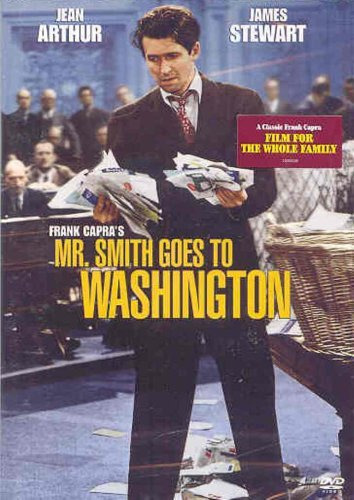
By 1939, director Frank Capra was already established fairly decently in Hollywood. After inventing the modern romcom with It Happened One Night in 1934, and creating the heartwarming story of a bumbling bumpkin inheriting a fortune in Mr. Deeds Goes to Town, Capra hit it big in 1938, with his adaptation of the Broadway show: You Can’t Take It With You. By 1939, he was prepped and ready for another smash hit.
Mr. Smith Goes to Washington, originally meant to be the sequel to Mr. Deeds Goes to Town, seemed to fit the bill well enough.
Released in October of 1939, Mr. Smith Goes to Washington was a box office success, capitalizing on Capra’s previous hits and catapulting lead actor James “Jimmy” Stewart to stardom, solidifying Jefferson Smith as one of the most iconic characters in American cinema. For years following its release in that crowded 1939 movie season, the film has been beloved as a classic Hollywood masterpiece, another triumph amidst 1939’s impressive catalog. Nominated for eleven Oscars but only winning one, the film is now heralded as an American paragon, a patriotic film, among some of the greatest films of all time, and looking back, it can be easy to see why that would be so.
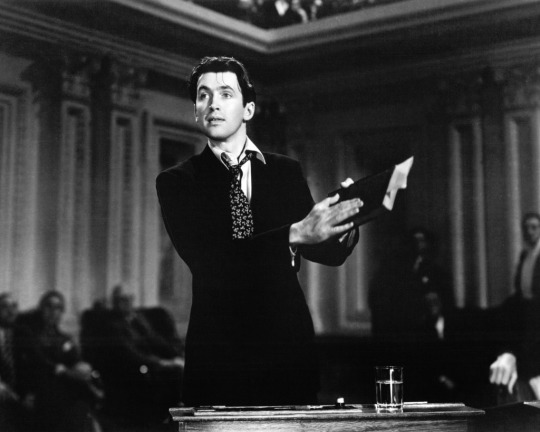
Interestingly enough, at the time of its release, this wasn’t the case.
Mr. Smith Goes to Washington debuted in Constitution Hall in Washington, and was immediately attacked by the press for an anti-American portrayal of politics, politicians, and Washington in general. There was even a concern about it’s showing overseas giving the ‘wrong impression’ of America, and yet, when American films began to be banned in German-occupied France, interestingly enough, Mr. Smith Goes to Washington was chosen as the last film many of these theaters showed.
Although the film was considered a box office success when it first came out, (the second highest grossing film of 1939 and third highest grossing film of the 1930s, behind Gone with the Wind and Snow White and the Seven Dwarves), and critical opinion (as well as audience opinion) outside of DC seemed favorable, it’s difficult to overlook the dark cloud that hung over it’s initial reception in the city it focuses the most on. Once one sees the film, it can be easy to see why there was such a ruckus raised, but still, one has to wonder, was one reaction or the other a bit extreme?
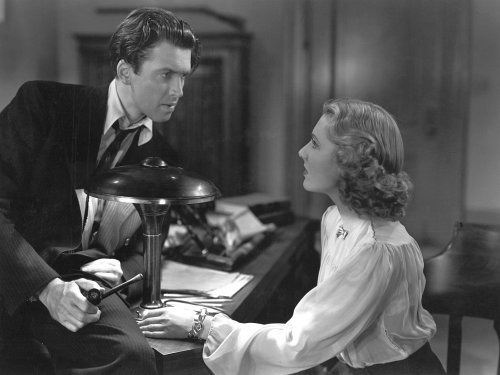
After all that hubbub, over eighty years later, the film has a reputation for being an American classic, one of Frank Capra’s best pictures, named as one of the best films of the prestigious 1939 movie season, even admitted into the United States National Film Registry in 1989 due to being deemed “culturally, historically, or aesthetically significant”. Ironically, even the government, who took the film so badly at first, eventually came to value it as a masterpiece.
So, what changed?
A lot of things. You can point to the ever-turbulent political landscape of post-Vietnam America, to the Watergate scandal’s removal of trust in America’s leaders, or the evolving tastes of the average movie-goer as to why it is that Mr. Smith Goes to Washington, despite itself not changing over the years, seems to have inspired such a wild turnaround in public opinion, becoming a juggernaut representation of American ideals and optimism against all odds.
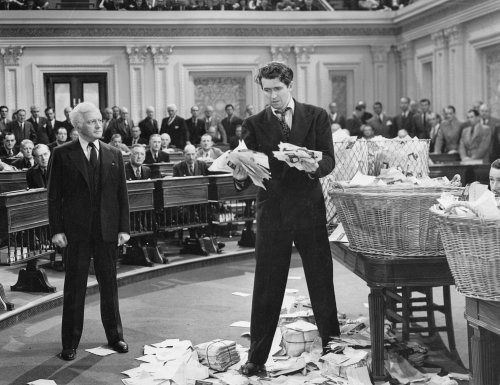
The question is, why?
Was it the film’s biting political satire? The iconic performances by classic actors? The sharp script brought to life by a director that has long since been considered a master at his craft?
These are all the questions we’re going to be taking a look at in the weeks ahead. Stay tuned, and thanks so much for reading.
#1939#30s#Film#Movies#Mr. Smith Goes to Washington#Mr. Smith Goes To Washington 1939#Political#Drama#Comedy#James Stewart#Jean Arthur#Claude Rains#Edward Arnold#Thomas Mitchell#Frank Capra
2 notes
·
View notes
Link
It’s been 24 years since Gillian Anderson last stepped up to the winner’s podium at the SAG Awards for “The X-Files,” and now Gold Derby’s odds predict she’ll be a first-time nominee for “The Crown.” She prevailed at the 1997 and 1996 ceremonies for her role as FBI Agent Dana Scully in the Best TV Drama Actress category, which combines female leads and supporting players from the prior calendar year. If Anderson ends up prevailing at the guild, she’d tie Edie Falco (“The Sopranos”) at three victories in this race. Julianna Margulies still holds the category record at four triumphs — two for “ER” and two for “The Good Wife.”
Anderson made her grand debut on “The Crown” during Season 4, which streamed last November on Netflix. She takes on the role of UK Prime Minister Margaret Thatcher, an adversarial character to Queen Elizabeth II (Olivia Colman) who drives much of the political drama in the 10 new episodes. The season is set between 1979 to 1990, the exact date range Thatcher served as the country’s first female PM. Television critics were unanimous in their glowing reviews of Anderson’s performance, which of course included all of Thatcher’s classic mannerisms.

According to Gold Derby’s odds, Anderson’s two “The Crown” co-stars are also expected to earn Screen Actors Guild nomination in Best TV Drama Actress: Colman and Emma Corrin as Princess Diana. The category is predicted to be filled out by a pair of “Ozark” nominees: Laura Linney as Wendy Byrde and Julia Garner as Ruth Langmore. If our predictions pan out, it would be the first time in SAG Awards history that all five nominees from this race heralded from just two shows.
But can Anderson’s supporting role really beat out leading ladies to take the SAG crown? Oh, yes. The last time a supporting actress claimed victory in this specific category was Maggie Smith for “Downton Abbey.” Like Anderson in “The Crown,” Smith played a can’t-look-away character who was seen as an antagonist of sorts to the rest of the cast. Before that, Jessica Lange (“American Hororr Story: Murder House”) prevailed for quite a similar role.
In addition to the SAG Awards, Anderson is also receiving Golden Globes buzz for playing Thatcher. In fact, she’s predicted to win Best TV Supporting Actress, a catch-all category that includes performances from dramas, comedies, TV movies and limited series. See more Golden Globes odds and rankings.
18 notes
·
View notes
Photo

Name: Nadia Pérez Gender pronouns: she/her Age: 32 Occupation: Screenwriter Hometown: Querétaro, Mexico/ New York, US Amount of time on the island: 3 months Face Claim: America Ferrera
Bio: (Triggers: neglect/emotional abuse)
Nadia Pérez was born Nadia Joanna Pérez de León in Queretaro, Mexico; where she lived 3 years of her life before her family immigrated to the US, as her father, Leonardo Pérez, had a job opportunity in New York City. The Pérez de León family only agreed to move since Nadia’s mother, Karina de León, had relatives in NYC.
Enrolled in a catholic school all through kindergarten, elementary, middle, and high school, Nadia had to learn English as fast as she could so she wouldn’t be left behind by her American classmates. Ambitious since a young age, Nadia’s goal during her school years was to be the top student in all her classes, something that was easy for her once she overcame the language barrier. She joined multiple clubs in school but her absolute favorite extracurricular activity was her school's local newspaper, where she wrote a column.
A distant father and an emotionally abusive mother made Nadia’s household a living hell during her teenage years. Her father often neglected her, as he would rather do literally anything else than spend time with his own daughter; meanwhile, her mother would usually force her to get good grades otherwise, she'd say Nadia was a waste of space. Being the introverted teen she was, her only company were books and often, her aunt Elena de León who lived next door, where Nadia usually spent her evenings so she wouldn't be near her mom. It was during these years where she began writing her own stories, submitting them to local contests in hopes of winning.
During her last year of highschool, Nadia actively searched for scholarships, knowing that was the only way she’ll go to a college where she could study what she wanted since her mom wanted to enroll her in a community college where she’d study business. Nadie won a full scholarship to attend the New York Film Academy after submitting a screenplay for a short she had done for class.
At age 18, she rented an apartment with 4 other friends and began attending New York Film Academy, slowly starting to cut communication with her direct family, all except her aunt. Nadia worked part-time in a bookstore while attending college and started dating an older student at the academy, who broke her heart after years of dating.
4 years later, Nadia graduated from the Film Academy and instantly decided to move to California, joining a group of aspiring actors, directors, and writers who wanted to make it big in Hollywood. While working on a local newspaper, Nadia started writing a short film which later would be funded by indie production, thanks to one of her friend’s connections.
After the success of said short film, Nadia worked as a screenwriter for other indie directors and small-scale projects. After some years of work like that, Nadia got her big shot as she started to work in the film adaptation for “Faster Boy”, a known bestseller. The movie was a hit and earned Nadia an Academy Award Nomination for Best Adapted Screenplay in 2019.
Nadia Pérez currently resides in Gaia Cove, working on an original screenplay. After the success of "Faster Boy", Nadia felt like she needed a new place to write, someplace where she could feel at peace. Her first thought was to move back to Mexico, but one of her friends told her about Gaia Cove and the place charmed her. Originally, Nadia was only supposed to stay a month, but she found herself feeling like Gaia Cove was the site for, the one place she could call home. While she's still working on her script, now that she's an official Gaia Cove resident she started working at the local Herald, going back to her newspaper roots.
Nadia is just 32, her whole life is ahead of her and she has no rush for the future, whatever comes at her, she’ll be ready.
Nadia is played by Eileen
1 note
·
View note
Text
Norma Shearer - The First Lady of MGM
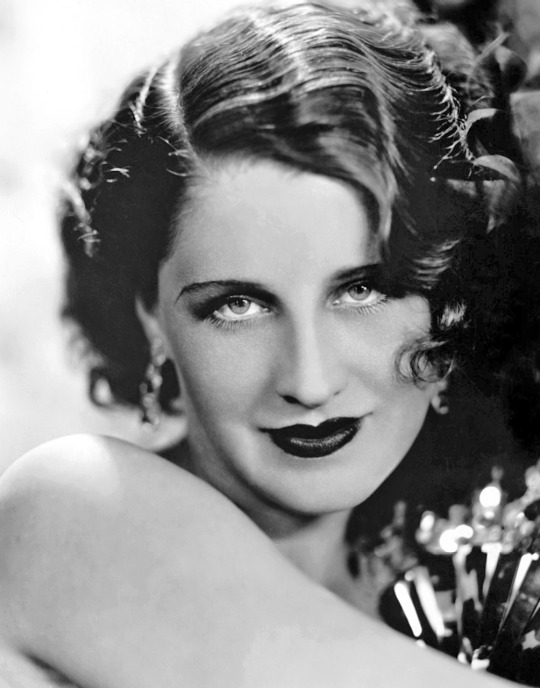
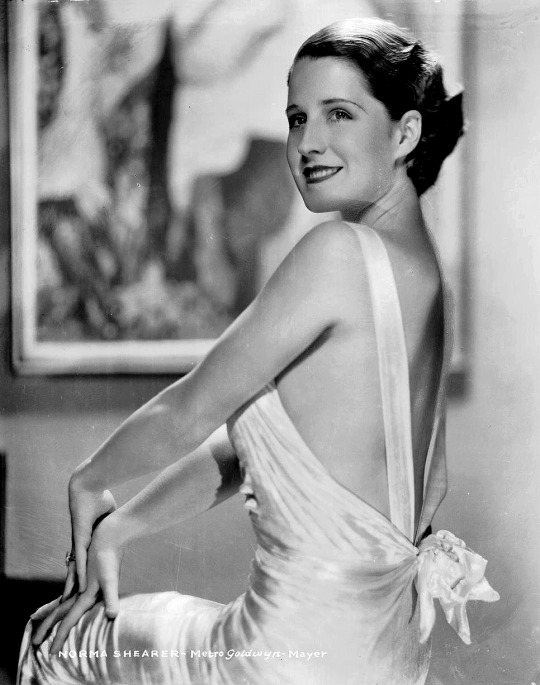
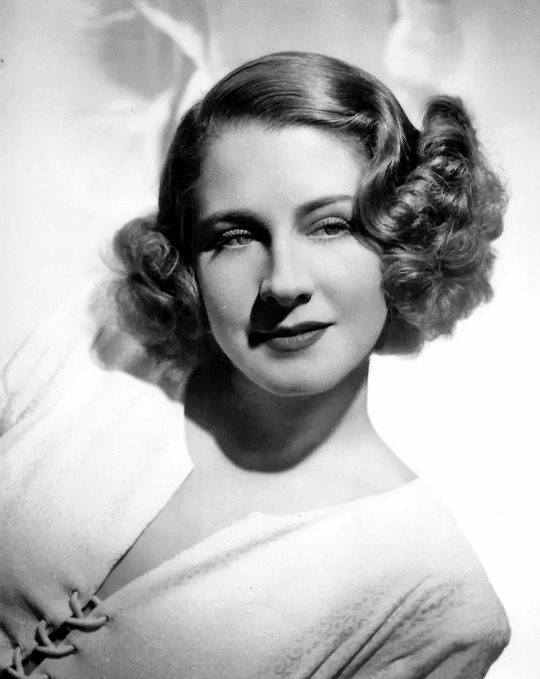
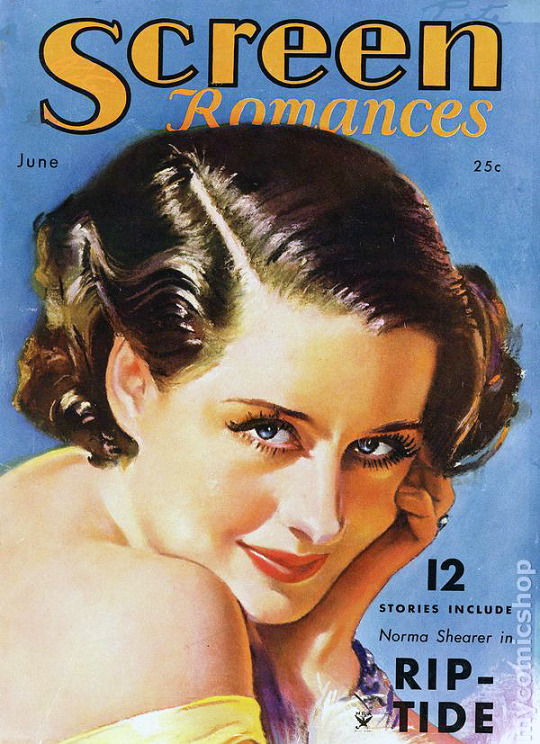

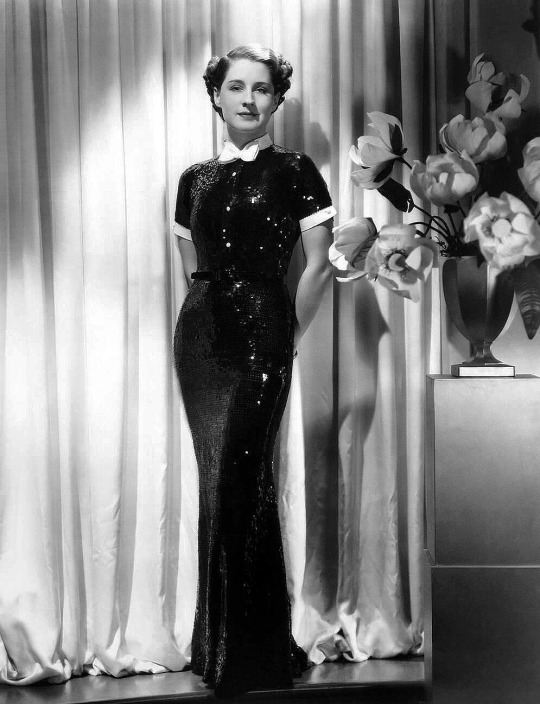
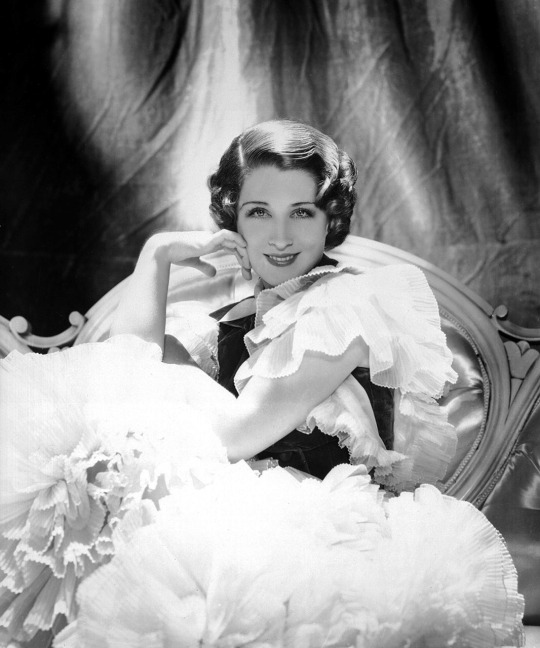





Edith Norma Shearer (born in Montreal, Quebec on August 11, 1902) was a Canadian-American actress known for her glamour, versatility, and determination. Despite her talent and good looks, her fortuitous marriage to legendary MGM producer Irving Thalberg is mostly credited in her becoming one of the studio's leading ladies and becoming known as "The First Lady of MGM."
Born to Irish and Scottish parents, Shearer moved to New York City in 1920 at the behest of her mother, in hopes that her daughter would become an actress. However, she did not find immediate success, with both Florenz Ziegfeld and D. W. Griffith pronouncing her dream of being a star impossible because of her nonaligned eyes. Undeterred, Shearer risked some of her savings on a consultation with Dr. William Bates, a pioneer in the treatment of strabismus, who prescribed a series of daily eye muscle-strengthening exercises.
A string of bit parts eventually brought Shearer to the notice of Louis B. Mayer, who offered her a contract in 1923 in Hollywood. After some success in minor roles, she contributed to the meteoric rise of the newly formed Metro-Goldwyn-Mayer by starring in the studio's first official production, He Who Gets Slapped (1924). The film was a success and and to Shearer's visibility. By late 1925, she was carrying her own films, and was one of MGM's biggest attractions, a bona fide star. She also made a smooth transition to sound films, even winning an Academy Award for Best Actress for The Divorcee (1930).
Nevertheless, her 1927 marriage to Thalberg gave her a degree of power in Hollywood that was resented by rivals such as Joan Crawford, Greta Garbo, and Jean Harlow. Sadly, Thalberg's unexpected death in 1936 resulted in her slow withdrawal from Hollywood, and she eventually retired from acting just several years after, in 1942.
Shearer died of bronchial pneumonia at the Motion Picture Country Home in Woodland Hills, California, where she had been living for a few years. She was less than a month shy of her 81st birthday.
Legacy:
Was the first person to receive three, four, five, and eventually six Academy Award nominations for acting: Their Own Desire (1929), A Free Soul (1931), The Barretts of Wimpole Street (1934), and Romeo and Juliet (1936), Marie Antoinette (1938) and winning with The Divorcee (1930)
With her brother Douglas Shearer, became the first Oscar-winning sibling in 1930
Won the Venice Film Festival – Volpi Cup for Best Actress for Marie Antoinette (1938)
Won the Photoplay Awards - Best Performances of the Month for a record six times: June 1929, January 1927, February 1926, May 1925, and October and November 1924
Listed by the Motion Picture Herald as one of America’s top-10 box office draws from 1931 to 1934
Is one of the celebrities whose picture Anne Frank placed on the wall of her bedroom in the "Secret Annex" in 1942
Credited for discovering discovering actress Janet Leigh and actor-producer Robert Evans
Commemorated by Canada Post in 2008 in its "Canadians in Hollywood" special series stamps
Inducted into Canada's Walk of Fame in 2008
Honored as Turner Classic Movies Star of the Month for November 2015
Nominated in a 2018 edition of Entertainment Weekly for greatest actress of all time
Has had a permanent exhibit at the Canadian Women in Film Museum since 2021
Was the subject of “A Free Soul: The Unexpected Life & Legacy of Norma Shearer” Exhibit at The Hollywood Heritage Museum in 2023
Is one of the celebrities whose picture Anne Frank placed on the wall of her bedroom in the "Secret Annex" in 1942
Has a star on the Hollywood Walk of Fame at 6636 Hollywood Blvd for motion picture
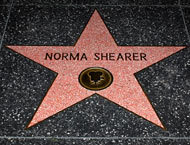
#Norma Shearer#The First Lady of MGM#First Lady of MGM#Queen of MGM#Silent Films#Silent Era#Silent Film Stars#Golden Age of Hollywood#Film Classics#Old Hollywood#Vintage Hollywood#Hollywood#Movie Star#Hollywood Walk of Fame#Walk of Fame#Movie Legends#hollywood legend#movie stars#1900s#28 Hollywood Legends Born in the 1900s
5 notes
·
View notes
Text
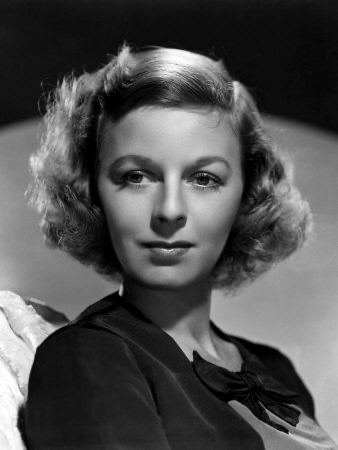
Margaret Brooke Sullavan (May 16, 1909 – January 1, 1960) was an American actress of stage and film.
Sullavan began her career onstage in 1929. In 1933 she caught the attention of movie director John M. Stahl and had her debut on the screen that same year in Only Yesterday.
Sullavan preferred working on the stage and made only 16 movies, four of which were opposite James Stewart in a popular partnership that included The Mortal Storm and The Shop Around the Corner. She was nominated for an Academy Award for Best Actress for her performance in Three Comrades (1938). She retired from the screen in the early 1940s, but returned in 1950 to make her last film, No Sad Songs for Me, in which she played a woman who was dying of cancer. For the rest of her career she would appear only on the stage.
Sullavan experienced increasing hearing problems, depression, and mental frailty in the 1950s. She died of an overdose of barbiturates, which was ruled accidental, on January 1, 1960, at the age of 50.
Sullavan was born in Norfolk, Virginia, the daughter of a wealthy stockbroker, Cornelius Sullavan, and his wife, Garland Councill Sullavan. She had a younger brother, Cornelius, and a half-sister, Louise Gregory. The first years of her childhood were spent isolated from other children. She suffered from a painful muscular weakness in the legs that prevented her from walking, so that she was unable to socialize with other children until the age of six. After her recovery she emerged as an adventurous and tomboyish child who preferred playing with the children from the poorer neighborhood, much to the disapproval of her class-conscious parents.
She attended boarding school at Chatham Episcopal Institute (now Chatham Hall), where she was president of the student body and delivered the salutatory oration in 1927. She moved to Boston and lived with her half-sister, Weedie, while she studied dance at the Boston Denishawn studio and (against her parents' wishes) drama at the Copley Theatre. When her parents cut her allowance to a minimum, Sullavan defiantly paid her way by working as a clerk in the Harvard Cooperative Bookstore (The Coop), located in Harvard Square, Cambridge.
Sullavan succeeded in getting a chorus part in the Harvard Dramatic Society 1929 spring production Close Up, a musical written by Harvard senior Bernard Hanighen, who was later a composer for Broadway and Hollywood.
The President of the Harvard Dramatic Society, Charles Leatherbee, along with the President of Princeton's Theatre Intime, Bretaigne Windust, who together had established the University Players on Cape Cod the summer before, persuaded Sullavan to join them for their second summer season. Another member of the University Players was Henry Fonda, who had the comic lead in Close Up.
In the summer of 1929 Sullavan appeared opposite Fonda in The Devil in the Cheese, her debut on the professional stage. She returned for most of the University Players' 1930 season. In 1931, she squeezed in one production with the University Players between the closing of the Broadway production of A Modern Virgin in July and its tour in September. She rejoined the University Players for most of their 18-week 1930–31 winter season in Baltimore.
Sullavan's parents did not approve of her choice of career. She played the lead in Strictly Dishonorable (1930) by Preston Sturges, which her parents attended. Confronted with her evident talent, their objections ceased. "To my deep relief", Sullavan later recalled. "I thought I'd have to put up with their yappings on the subject forever."
A Shubert scout saw her in that play as well and eventually she met Lee Shubert himself. At the time, Sullavan was suffering from a bad case of laryngitis and her voice was huskier than usual. Shubert loved it. In subsequent years Sullavan would joke that she cultivated that "laryngitis" into a permanent hoarseness by standing in every available draft.
Sullavan made her debut on Broadway in A Modern Virgin (a comedy by Elmer Harris), on May 20, 1931.
At one point in 1932 she starred in four Broadway flops in a row (If Love Were All, Happy Landing, Chrysalis (with Humphrey Bogart) and Bad Manners), but the critics praised Sullavan for her performances in all of them. In March 1933, Sullavan replaced another actor in Dinner at Eight in New York. Movie director John M. Stahl happened to be watching the play and was intrigued by Sullavan. He decided she would be perfect for a picture he was planning, Only Yesterday.
At that time Sullavan had already turned down offers for five-year contracts from Paramount and Columbia. Sullavan was offered a three-year, two-pictures-a-year contract at $1,200 a week. She accepted it and had a clause put in her contract that allowed her to return to the stage on occasion. Later on in her career, Sullavan would sign only short-term contracts because she did not want to be "owned" by any studio.
Sullavan arrived in Hollywood on May 16, 1933, her 24th birthday. Her film debut came that same year in Only Yesterday. She chose her scripts carefully. She was dissatisfied with her performance in Only Yesterday. When she saw herself in the early rushes, she was so appalled that she tried to buy out her contract for $2,500, but Universal refused.
In his November 10, 1933, review in The New York Herald Tribune, Richard Watts, Jr. wrote that Sullavan "plays the tragic and lovelorn heroine of this shrewdly sentimental orgy with such forthright sympathy, wise reticence and honest feeling that she establishes herself with some definiteness as one of the cinema people to be watched".[11] She followed that role with one in Little Man, What Now? (1934), about a couple struggling to survive in impoverished post–World War I Germany.
Originally, Universal was reluctant to make a movie about unemployment, starvation and homelessness, but Little Man was an important project to Sullavan. After Only Yesterday she wanted to try "the real thing". She later said that it was one of the few things she did in Hollywood that gave her a great measure of satisfaction. The Good Fairy (1935) was a comedy that Sullavan chose to illustrate her versatility. During the production, she married its director, William Wyler.
King Vidor's So Red the Rose (1935) dealt with people in the South in the aftermath of the Civil War. It preceded by one year the publication of Margaret Mitchell's bestselling novel Gone With the Wind, and the novel's film adaptation by four years; the latter became a blockbuster. Sullavan played a childish Southern belle who matures into a responsible woman. The film also dealt with the situation of characters who were freed black slaves.
In Next Time We Love (1936), Sullavan plays opposite the then-unknown James Stewart. She had been campaigning for Stewart to be her leading man and the studio complied for fear that she would stage a threatened strike. The film dealt with a married couple who had grown apart over the years. The plot was unconvincing and simple, but the gentle interplay between Sullavan and Stewart saves the movie from being a soapy and sappy experience. Next Time We Love was the first of four films made by Sullavan and Stewart.
In the comedy The Moon's Our Home (1936), Sullavan played opposite her ex-husband Henry Fonda. The original script was rather pallid, and Dorothy Parker and Alan Campbell were brought in to punch up the dialogue, reportedly at Sullavan's insistence. Sullavan and Fonda play a newly married couple, and the movie is a cavalcade of insults and quips. Her seventh film, Three Comrades (1938), is a drama set in post–World War I Germany. Three returning German soldiers meet Sullavan who joins them and eventually marries one of them. She gained an Oscar nomination for her role and was named the year's best actress by the New York Film Critics Circle.
Sullavan reunited with Stewart in The Shopworn Angel (1938). Stewart played a sweet, naive Texan soldier on his way to Europe (World War I) who marries Sullavan on the way. Her ninth film was the rather soapy The Shining Hour (1938), playing the suicidal sister-in-law to Joan Crawford. In The Shop Around the Corner (1940), Sullavan and Stewart worked together again, playing colleagues who do not get along at work, but have both responded to a lonely-hearts ad and are (without knowing it) exchanging letters with each other.
The Mortal Storm (1940) was the last movie Sullavan and Stewart did together. Sullavan played a young German girl engaged in 1933 to a confirmed Nazi (Robert Young). When she realizes the true nature of his political views, she breaks the engagement and turns her attention to anti-Nazi Stewart. Later, trying to flee the Nazi regime, Sullavan and Stewart attempt to ski across the border to safety in Austria. Sullavan is gunned down by the Nazis (under orders from her ex-fiance). Stewart, at her request, picks up the dying Sullavan and takes her by skis into Austria, so she can die in what was still a free country.
Back Street (1941) was lauded as one of the best performances of Sullavan's Hollywood career. She wanted Charles Boyer to play opposite her so much that she agreed to surrender top billing to him. Boyer plays a selfish and married banker and Sullavan his long-suffering mistress. Although he loves Sullavan, he is unwilling to leave his wife and family in favour of her. So Ends Our Night (1941) was another wartime drama. Sullavan (on loan for a one-picture deal from Universal) plays a Jewish girl perpetually on the move with falsified passport and identification papers and always fearing that the officials will discover her. On her way across Europe, she meets up with a young Jewish man (Glenn Ford) and the two fall in love.
A 1940 court decision obligated Sullavan to fulfill her original 1933 agreement with Universal, requiring her to make two more films for them. Back Street (1941) came first. The light comedy, Appointment for Love (1941), was Sullavan's last picture with that company. In the film, Sullavan appeared with Boyer again. Boyer's character marries Sullavan, who tells him that his past affairs mean nothing to her. She insists that each must have an apartment in the same building and that they meet only once a day, at seven o'clock in the morning.
Cry 'Havoc' (1943) is a World War II drama and a rare all-female film. Sullavan played the strong mother figure who keeps a crew of nurses in line in a dugout in Bataan, while they are awaiting the advance of Japanese soldiers who are about to take over. It was the last film Sullavan made with Metro-Goldwyn-Mayer. After its completion, she was free of all film commitments. She had often referred to MGM and Universal as "jails". When her husband, Leland Hayward, tried to read her the good reviews of Cry 'Havoc', she responded with usual bluntness: "You read them, use them for toilet paper. I had enough hell with that damned picture while making it – I don't want to read about it now!"
Sullavan's co-starring roles with James Stewart are among the highlights of their early careers. In 1935, Sullavan had decided on doing Next Time We Love. She had strong reservations about the story, but had to "work off the damned contract". The script contained a role she thought might be ideal for Stewart, who was best friends with Sullavan's first husband, actor Henry Fonda. Years earlier, during a casual conversation with some fellow actors on Broadway, Sullavan predicted Stewart would become a major Hollywood star.
By 1936, Stewart was a contract player at MGM but getting only small parts in B-movies. At that time Sullavan worked for Universal and when she brought up Stewart's name, they were puzzled. The Universal casting people had never heard of him. At Sullavan's suggestion Universal agreed to test him for her leading man and eventually he was borrowed from a willing MGM to star with Sullavan in Next Time We Love.
Stewart had been nervous and unsure of himself during the early stages of production. At that time he had only had two minor MGM parts which had not given him much camera experience. The director, Edward H. Griffith, began bullying Stewart. "Maggie, he's wet behind the ears," Griffith told Sullavan. "He's going to make a mess of things."
She believed in Stewart and spent evenings coaching him and helping him scale down his awkward mannerisms and hesitant speech that were soon to be famous around the world. "It was Margaret Sullavan who made James Stewart a star," director Griffith later said. "And she did, too," Bill Grady from MGM agreed. "That boy came back from Universal so changed I hardly recognized him." Gossip in Hollywood at that time (1935–36) was that William Wyler, Sullavan's then-husband, was suspicious about his wife's and Stewart's private rehearsing together.
When Sullavan divorced Wyler in 1936 and married Leland Hayward that same year, they moved to a colonial house just a block down from Stewart.[22] Stewart's frequent visits to the Sullavan/Hayward home soon restoked the rumors of his romantic feelings for Sullavan. Sullavan and Stewart's second movie together was The Shopworn Angel (1938). "Why, they're red-hot when they get in front of a camera," Louis B. Mayer said about their onscreen chemistry. "I don't know what the hell it is, but it sure jumps off the screen."
Walter Pidgeon, who was part of the triangle in The Shopworn Angel later recalled: "I really felt like the odd-man-out in that one. It was really all Jimmy and Maggie ... It was so obvious he was in love with her. He came absolutely alive in his scenes with her, playing with a conviction and a sincerity I never knew him to summon away from her." Eventually the duo made four movies together between 1936 and 1940 (Next Time We Love, The Shopworn Angel, The Shop Around the Corner, and The Mortal Storm).
Sullavan took a break from films from 1943-50. Throughout her career, Sullavan seemed to prefer the stage to the movies. She felt that only on the stage could she improve her skills as an actor. "When I really learn to act, I may take what I have learned back to Hollywood and display it on the screen", she said in an interview in October 1936 (when she was doing Stage Door on Broadway between movies). "But as long as the flesh-and-blood theatre will have me, it is to the flesh-and-blood theatre I'll belong. I really am stage-struck. And if that be treason, Hollywood will have to make the most of it".
Another reason for her early retirement from the screen (1943) was that she wanted to spend more time with her children, Brooke, Bridget and Bill (then 6, 4 and 2 years old). She felt that she had been neglecting them and felt guilty about it.[25] Sullavan would still do stage work on occasion. From 1943–44 she played the sexually inexperienced but curious Sally Middleton in The Voice of the Turtle (by John Van Druten) on Broadway and later in London (1947). After her short return to the screen in 1950 with No Sad Songs for Me, she did not return to the stage until 1952.
Her choice then was as the suicidal Hester Collyer, who meets a fellow sufferer, Mr. Miller (played by Herbert Berghof), in Terence Rattigan's The Deep Blue Sea. In 1953 she agreed to appear in Sabrina Fair by Samuel Taylor.
She came back to the screen in 1950 to do one last picture, No Sad Songs for Me. She played a suburban housewife and mother who learns that she will die of cancer within a year and who then determines to find a "second" wife for her soon-to-be-widower husband (Wendell Corey). Natalie Wood, then eleven, plays their daughter.
After No Sad Songs for Me and its favorable reviews, Sullavan had a number of offers for other films, but she decided to concentrate on the stage for the rest of her career.
In 1955–56 Sullavan appeared in Janus, a comedy by playwright Carolyn Green. Sullavan played the part of Jessica who writes under the pen name Janus, and Robert Preston played her husband. The play ran for 251 performances from November 1955 to June 1956.
In the late 1950s Sullavan's hearing and depression were getting worse. However, in 1959 she agreed to do Sweet Love Remembered by playwright Ruth Goetz. It was to be Sullavan's first Broadway appearance in four years. Rehearsals began on December 1, 1959. She had mixed emotions about a return to acting and her depression soon became clear to everyone: "I loathe acting", she said on the very day she started rehearsals. "I loathe what it does to my life. It cancels you out. You cannot live while you are working. You are a person surrounded by an unbreachable wall".
On December 18, 1955, Sullavan appeared as the mystery guest on the TV panel show What's My Line?.
Sullavan had a reputation for being both temperamental and straightforward. On one occasion Henry Fonda had decided to take up a collection for a 4th of July fireworks display. After Sullavan refused to make a contribution, Fonda complained loudly to a fellow actor. Then Sullavan rose from her seat and doused Fonda from head to foot with a pitcher of ice water. Fonda made a stately exit, and Sullavan, composed and unconcerned, returned to her table and ate heartily. Another of her blowups almost killed Sam Wood, one of the founders of the Motion Picture Alliance. Wood was a keen anti-Communist. He dropped dead from a heart attack shortly after a raging argument with Sullavan, who had refused to fire a writer on a proposed film on account of his left-wing views. Louis B. Mayer always seemed wary and nervous in her presence. "She was the only player who outbullied Mayer", Eddie Mannix of MGM later said of Sullavan. "She gave him the willies".
Sullavan was married four times. She married actor Henry Fonda on December 25, 1931, while both were performing with the University Players in its 18-week winter season in Baltimore at the Congress Hotel Ballroom on West Franklin Street near North Howard St. Sullavan and Fonda separated after two months and divorced in 1933.
After separating from Fonda, Sullavan began a relationship with Broadway producer Jed Harris. She later began a relationship with William Wyler, the director of her next movie, The Good Fairy (1935). They were married in November 1934, and divorced in March 1936.
Sullavan's third marriage was to agent and producer Leland Hayward. Hayward had been Sullavan's agent since 1931. They married on November 15, 1936. At the time of the marriage, Sullavan was pregnant with the couple's first child. Their daughter, Brooke, was born in 1937 and later became an actress. The couple had two more children, Bridget (1939 – October 17, 1960) and William III "Bill" (1941–2008), who became a film producer and attorney. In 1947, Sullavan filed for divorce after discovering that Hayward was having an affair with socialite Slim Keith. Their divorce became final on April 20, 1948.
In 1950, Sullavan married for a fourth and final time to English investment banker Kenneth Wagg. They remained married until her death in 1960.
Sullavan’s children, in particular Bridget and Bill, often proved rebellious and contrary. As a result of the divorce from Hayward, the family fell apart. Sullavan felt that Hayward was trying to alienate their children from her. When the children went to California to visit their father they were so spoiled with expensive gifts that, when they returned to their mother in Connecticut, they were deeply discontented with what they saw as a staid lifestyle.
By 1955, when Sullavan's two younger children told their mother that they preferred to stay with their father permanently, she suffered a nervous breakdown. Sullavan's eldest daughter, Brooke, later wrote about the breakdown in her 1977 autobiography Haywire: Sullavan had humiliated herself by begging her son to stay with her. He remained adamant and his mother had started to cry. "This time she couldn't stop. Even from my room the sound was so painful I went into my bathroom and put my hands on my ears". In another scene from the book, a friend of the family (Millicent Osborne) had been alarmed by the sound of whimpering from the bedroom: "She walked in and found mother under the bed, huddled in a foetal position. Kenneth was trying to get her out. The more authoritative his tone of voice, the farther under she crawled. Millicent Osborne took him aside and urged him to speak gently, to let her stay there until she came out of her own accord". Eventually Sullavan agreed to spend some time (two and a half months) in a private mental institution. Her two younger children, Bridget and Bill, also spent time in various institutions. Bridget died of a drug overdose in October 1960, while Bill died of a self-inflicted gunshot wound in March 2008.
Sullavan suffered from the congenital hearing defect otosclerosis that worsened as she aged, making her more and more hearing impaired. Her voice had developed a throatiness because she could hear low tones better than high ones. From early 1957, Sullavan's hearing declined so much that she was becoming depressed and sleepless and often wandered about all night. She would often go to bed and stay there for days, her only words: "Just let me be, please". Sullavan had kept her hearing problem largely hidden. On January 8, 1960 (one week after Sullavan's death), The New York Post reporter Nancy Seely wrote: "The thunderous applause of a delighted audience—was it only a dim murmur over the years to Margaret Sullavan? Did the poised and confident mien of the beautiful actress mask a sick fear, night after night, that she'd miss an important cue?"
On January 1, 1960, at about 5:30 p.m., Sullavan was found in bed, barely alive and unconscious, in a hotel room in New Haven, Connecticut. Her copy of the script to Sweet Love Remembered, in which she was then starring during its tryout in New Haven, was found open beside her. Sullavan was rushed to Grace New Haven Hospital, but shortly after 6:00 p.m. she was pronounced dead on arrival.[38] She was 50 years old. No note was found to indicate suicide, and no conclusion was reached as to whether her death was the result of a deliberate or an accidental overdose of barbiturates. The county coroner officially ruled Sullavan's death an accidental overdose. After a private memorial service was held in Greenwich, Connecticut, Sullavan was interred at Saint Mary's Whitechapel Episcopal Churchyard in Lancaster, Virginia.
For her contribution to the motion picture industry, Margaret Sullavan has a star on the Hollywood Walk of Fame located at 1751 Vine Street. She was inducted, posthumously, into the American Theater Hall of Fame in 1981.
Sullavan's eldest daughter, actress Brooke Hayward, wrote Haywire, a best-selling memoir about her family, that was adapted into the miniseries Haywire that aired on CBS starring Lee Remick as Margaret Sullavan and Jason Robards as Leland Hayward.
#margaret sullavan#classic hollywood#classic movie stars#golden age of hollywood#old hollywood#1930s hollywood#1940s hollywood#1950s hollywood
9 notes
·
View notes
Text
TOP OF MY HEAD: WAX OF BALL
May 16, 1964

Last summer I was engaged to write a one-hour special comedy program starring this glamorous bouquet of names: Jack Benny, Danny Thomas, Garry Moore, Lucille Ball, Andy Griffith, and Phil Silvers. (1)
I am not going to single out any certain name, but one of these stars gave me plenty of trouble. If I play my cards right, I may never have to write for her again.
These six television personalities are all under the sponsorship of one advertiser and appear weekly for separate products in their own respective half hour niches. To herald the opening of a new season a week before their first shows appeared. General Foods gathered them all together into one huge bowl to serve up a mighty chef's salad. It was only natural that some ham should have slithered in.
It was at once discernible to the writers that to accommodate this array of disparate talent the script concept would have to include two important factors. One, a plot in which they would all be concerned. Two, jokes distributed in equal portions among the six performers. Give one comedian, working with a group of other comedians, fewer lines than the others and you have an actor on your hands who, as rehearsals go along, sinks lower than the second f in Schrafft's. (2)
The plot we came up with was a simple and workable one. Five of our stars see a news item in Variety that General Foods has just hired Phil Silvers to do a new half-hour show.
"It is rumored," says our Variety story, "that General Foods may drop one of the other five." If that sounds contrived, it was. We put a piece of paper into the typewriter and contrived it. I don't quite know what critics mean when they write that a story line was contrived. I like to think it was conceived. We certainly went through enough labor to bring it into the world.
In due course an outline in some depth was written and presented to the advertising agency, and there was joy in all the cubicles up at Benton and Bowles. They phoned to say they had engaged as producer a man from the theater with a long list of distinguished plays he had nurtured through their out-of-town tryouts to Broadway successes—Leland Hayward. Mr. Hayward and I were to make the trip to the West Coast and articulate our outline to the stars. Which we did, to unanimous approval. The agency men were quite pleased, and at lunch Ed Ebel, vice-president of General Foods, insisted I have a second dessert.
Then back we came and the script was written. You know that line about everything being fine at the theater until the curtain went up? In the purified vernacular of television, all heck broke loose. Miss Ball found it highly incompatible with her public image to pretend that she would worry about losing her job to Phil Silvers because everybody knows she is president of Desilu Productions. She wanted a slight change—the script to state explicitly that she is president of Desilu and she wasn't worried.
Well, this played hell with our premise —excuse it, I'm getting steamed up now. We watered the plot down to "although Miss Ball was president of Desilu and was not worried about losing her job she would pretend to have some concern for the other stars who might lose their jobs and she would help get rid of Mr. Silvers." Some of the enchantment of doing the show was now slipping away. But it got worse. My good friend Jack Benny, when he saw the changes, reminded us that everybody knows he's quite wealthy and he wouldn't be worried about losing his job either. To keep it from spreading through the cast, Mr. Hayward explained that they were playing the parts of people about to lose their jobs—a crisis with which viewers can all identify.
The point was finally made and the script went into rehearsal. Word came back to us from the Coast that Miss Ball, who evidently wasn't finding it very rewarding laugh-wise to be the public image of president of Desilu, had ordered other changes into the script— among them a scene with Mr. Silvers known in burlesque as "Again I Turn" (3) —ending with the pie-in-the-face bit, in which the president of Desilu pretended to be an old scrubwoman.
After the show went on the air I heard to my sorrow that some viewers found this scene quite hilarious. This I can attribute to only one unfortunate thing—Miss Ball happens to be one of the country's most talented and prolific comediennes.
The other Sunday night Miss Ball appeared in an hour show with Bob Hope. (4) She played, of all things, the president of Desilu. Also, she was an actress for Desilu. She appeared in one scene as the actress trying on a top hat, white tie, and tails.
"This is what I wear in the magic act, isn't it?" she asked the tailor. "Where are the tricks?"
"In the suit," he replied, as the public image of the Desilu president went off gaily to a board of directors' meeting.
Well, if there was a message in a television program, this was it. No sooner had she arrived at the meeting than she removed the top hat, and there, nestling in the hutch of all that red hair, was a rabbit. Desilu stockholders will please not assume that this is her public image.
Also, the very next night the president of Desilu appeared in her usual weekly show. (5) The premise: "Lucy takes a job as a summons server to earn vacation money."
~ GOODMAN ACE
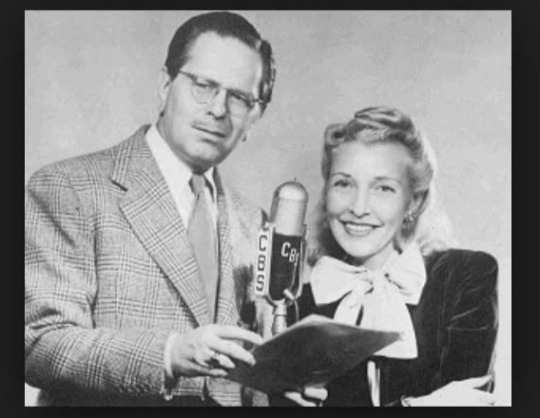
Goodman Ace (1899-1982) was born as Goodman Aiskowitz, aka "Goody" (as he was known to friends) had a low-key, literate drollery and softly tart way of tweaking trends and pretenses made him one of the most sought after writers in radio and television from the 1930s through the 1960s. In 1957 and 1959 he was Emmy nominated for writing “The Perry Como Show.” He and his wife Jane had a long-lasting radio breakfast show called “Easy Aces” that transferred to television in 1949 - where it lasted just six months. As per his desires, “General Foods Opening Night” was the first and last time he collaborated with Lucille Ball.
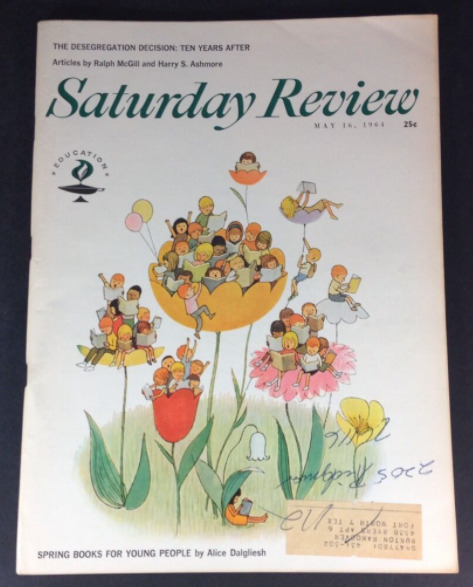
This article appeared in the May 16, 1964 issue of Saturday Review, a weekly literary magazine published from 1920 to 1986. Norman Cousins was the editor from 1940 to 1971. It was described as "a compendium of reportage, essays and criticism about current events, education, science, travel, the arts and other topics."
FOOTNOTES TO HISTORY
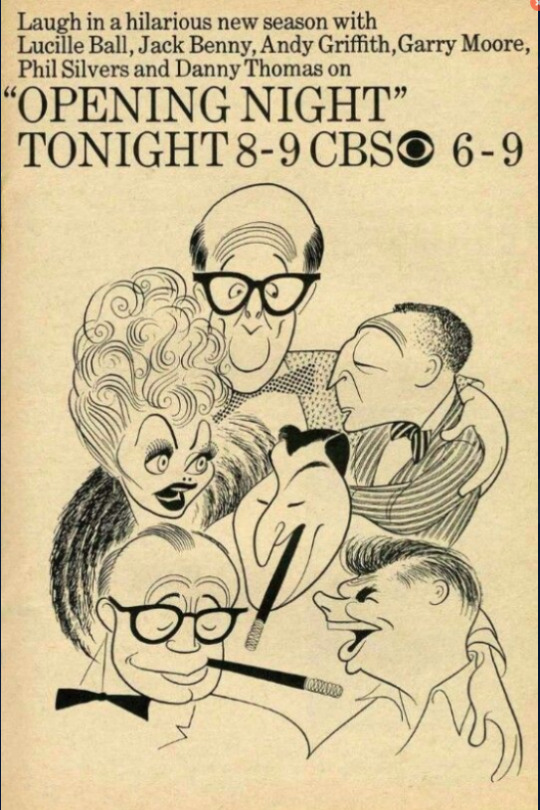
(1) The TV special that Goodman Ace was employed to write was titled “Opening Night” airing September 23, 1963 on CBS starring Phil Silvers (“The New Phil Silvers Show”), Lucille Ball (“The Lucy Show”), Jack Benny (“The Jack Benny Program”), Andy Griffith (“The Andy Griffith Show”), Danny Thomas (“Make Room for Daddy”), and Garry Moore (”I’ve Got A Secret”).
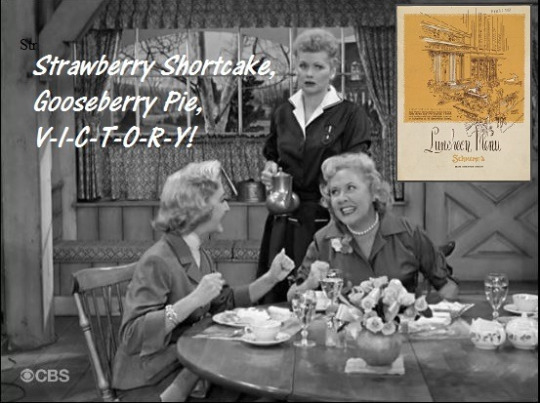
(2) Schrafft’s was a chain of moderately priced New York restaurants which often attracted ladies who were out for shopping trips. It was one of the first restaurants to allow un-escorted females on a routine basis. In 1981, the Boston-based candy company that owned the chain ceased operations, leaving just a few remaining restaurants in private hands. Schrafft’s was mentioned in “Lucy Does the Tango” (ILL S6;E20) and ““Housewarming” (ILL S6;E23).
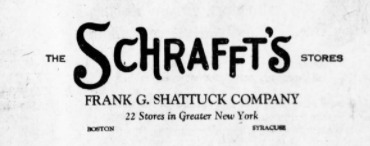
Ace writes "sinks lower than the second f in Schrafft’s”. This is a reference to the company’s distinctive logo.
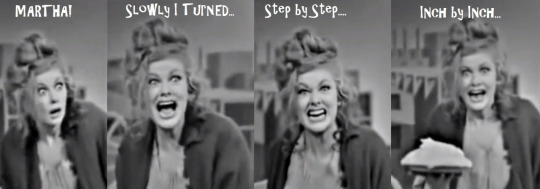
(3) The vaudeville routine is most commonly known as “Slowly I Turned” or “Slowly I Turn” or even “Martha”, but not “Again I Turn,” as Goodman writes. Perhaps this mistake is intentional to show his displeasure of the age-old vaudeville routine being inserted into his script - or perhaps not. Lucille Ball had performed “Slowly I Turned” as Lucy Ricardo on “The Ballet” (ILL S1;E9) opposite Buffo the Clown (Frank J. Scannell) in 1952. This time, Lucy takes the role of the clown, and Phil Silvers is the one with the kind face. For plot purposes, Lucille is dressed as a charwoman.
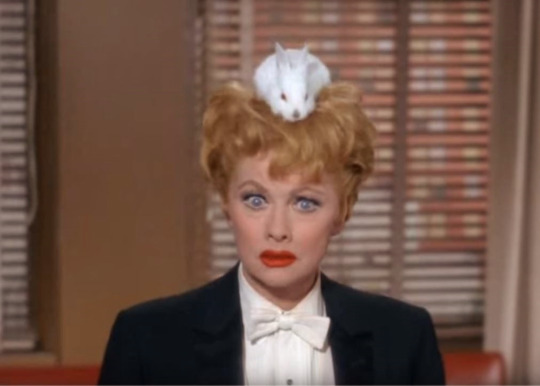
(4) The show Goodman Ace is referring to was titled “Mr. and Mrs.” aka “The Lucille Ball Comedy Hour” and was aired on April 19, 1964. As he points out, the premise has Lucille Ball playing ‘Herself’ as the head of a studio named Consolidated Pictures (not Desilu). Like the real-life Ball, she also has a popular TV show in which she plays a wacky redhead named Bonnie Blakely (not Lucy Carmichael).
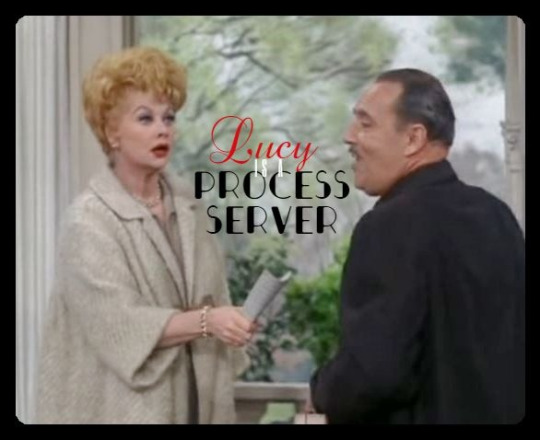
(5) Ace is referring to “Lucy is a Process Server” (TLS S2;E27) aired on April 20, 1964, in which Ball plays Lucy Carmichael, a single mother of two who takes a second job as a process server to make enough money to go on vacation with her best friend and roommate Viv (Vivian Vance). Her first summons must be served to Mr. Mooney.
Original 1964 article by Goodman Ace, transcribed verbatim. Footnotes by Michael T. Mooney.
#Goodman Ace#Lucille Ball#Opening Night#Saturday Review#Magazine#mr. and mrs.#The Lucy Show#Slowly I Turned#Schraff's#I Love Lucy#TV#Phil Silvers#Andy Griffith#Jack Benny#General Foods#Garry Moore#Danny Thomas#1964#Desilu#Leland Hayward
1 note
·
View note
Text
'Vanya, the solo adaptation of Chekhov’s Uncle Vanya starring Andrew Scott, has taken over £1 million at the UK and Ireland box office during its National Theatre Live cinema release.
Simon Stephen’s version of the classic text opened last autumn at the Duke of York’s Theatre, directed by Sam Yates with design by Rosanna Vize. All four are credited as co-creators in the piece, while the creative team also includes lighting designer James Farncombe, sound designer Dan Balfour, video designer Jack Phelan, movement director Michela Meazza, costume designer Natalie Pryce, associate designer Blythe Brett and assistant director Francesca Hsieh.
The piece won the Best Play Revival award at the 24th Annual WhatsOnStage Awards earlier this month. Its filmed version premiered in 737 venues across UK and Ireland on Thursday 22 February – the widest release for National Theatre Live since the initiative began in 2009, when it took over £768,872 in a single night. By the end of the weekend, that tally had risen to over £1 million – the largest amount since Prima Facie starring Jodie Comer was played in cinemas.
The piece saw Scott take on all the roles in the piece across a 105-minute runtime, and was heralded as “a revelation” by WhatsOnStage’s Sarah Crompton.
Scott was also nominated at the WhatsOnStage Awards for his turn in the show, having previously won the award for Best Actor in a Play for Present Laughter in 2020...'
#Vanya#National Theatre Live#Andrew Scott#Simon Stephens#Sam Yates#WhatsOnStage Awards#Duke of York Theatre#Prima Facie#Jodie Comer#Rosanna Vize#Chekhov
0 notes
Text
80 Years Later: Careers Built in Hollywood’s Greatest Year By Jessica Pickens
The year 1939 is often heralded as the most prolific year in Hollywood, yielding the highest quality films released in a single year. Some of the most famous films of all time were first seen by audiences in 1939: THE WIZARD OF OZ, GONE WITH THE WIND, DARK VICTORY and MR. SMITH GOES TO WASHINGTON. But outside of these films, 1939 was also important to a number of acting careers. For some actors, they received a role that offered the big break they were waiting on, catapulting them into stardom. Others who were already more established, received roles that helped revitalize their career:
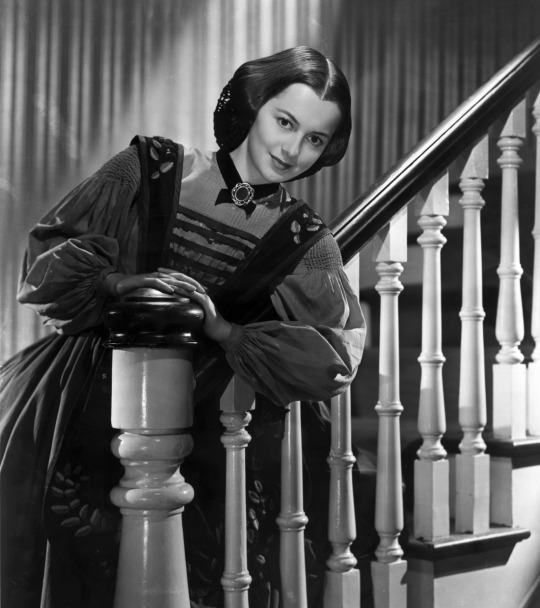
Olivia de Havilland: Olivia de Havilland started in films in 1935, and while she had several starring roles, she was frustrated that none of them offered the quality that she was looking for. De Havilland often played second fiddle as a romantic partner to the leading man—particularly Errol Flynn. She appeared in five films released in 1939, but it was just one that was the catalyst for enhancing her career: the role of Melanie Wilkes in GONE WITH THE WIND. She fought for the role of Melanie, a stark contrast to the character of Scarlett O’Hara, and it ultimately transformed her career.
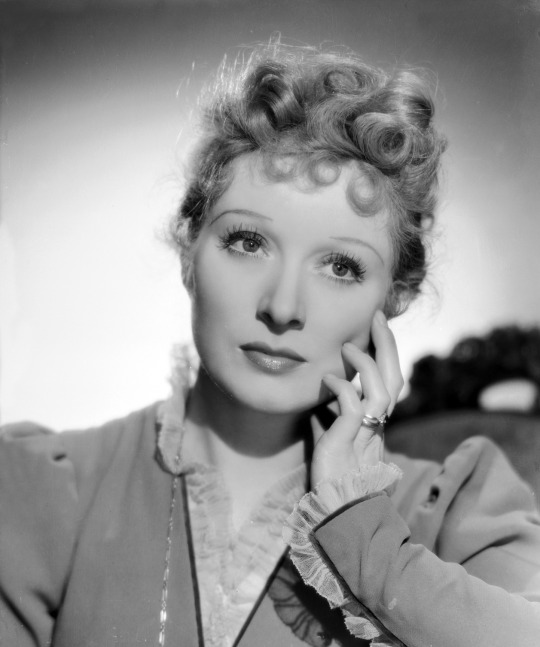
Greer Garson: Greer Garson starred in her first film in 1939 — GOODBYE, MR. CHIPS. The film follows a stuffy school teacher, Mr. Chipping played by Robert Donat, who is disliked by most of his pupils. But when Mr. Chipping meets and marries Katherine, played by Garson, she softens him and teaches him to show more kindness to his students. Garson was reluctant to take the role, because the screen time is brief. However, her role as Mr. Chipping’s wife is important, as it transforms the main character. The film also launched her into stardom and she receive¬d an Academy Award nomination for Best Actress to boot. Garson very quickly became one of Metro-Goldwyn-Mayer’s top stars.
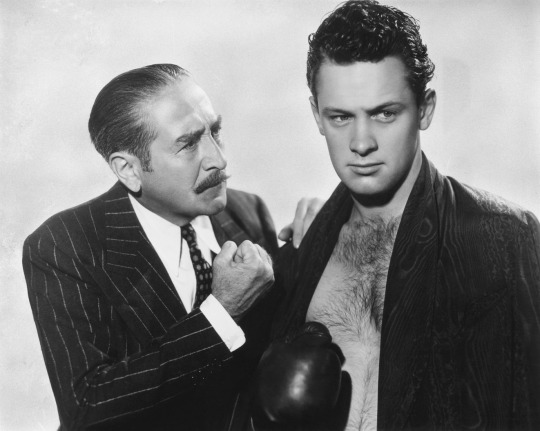
William Holden: After two uncredited performances, William Holden’s first credited film role came in 1939 and it was a starring role. Holden starred alongside Barbara Stanwyck in GOLDEN BOY. In the film, Holden plays a violinist who wants to become a boxer to help earn his family more money. The issue is that boxing brings the risk of hand injuries, which would prevent him from becoming a fine concert violinist. The film made Holden a stand-out new star of that year.
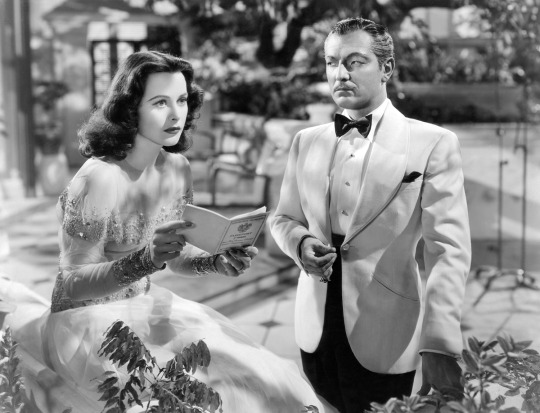
Hedy Lamarr: Hedy Lamarr acted in German films but received international attention when she traveled to the United States and starred in ALGIERS (1938). When Lamarr signed with Metro-Goldwyn-Mayer, she became one of the studio’s top stars and glamour girls. Her first film under MGM was LADY OF THE TROPICS (1939). Lamarr plays a woman of mixed race –half French, half Asian—who desperately wants to leave French Saigon, or Indochina. She falls in love with and marries rich playboy Robert Taylor, who promises to take her to America, but societal prejudices threatens to ruin their happiness.

David Niven: As early as 1932, English actor David Niven played uncredited, supporting or other background roles in films. But in 1939, BACHELOR MOTHER offered him his first true leading man role. Niven stars alongside Ginger Rogers who plays a department store worker who ends up with a baby by mistake. Everyone –including Niven—believes Rogers is the mother and encourages her to take responsibility for the baby. After the success of this film, Niven returned to England to serve in the British Army. After World War II, Niven remained a leading man and top star in Hollywood and the UK.

Basil Rathbone: Basil Rathbone was a star as early as 1930, with roles in top films like ANNA KARENINA (1935), A TALE OF TWO CITIES (1935) and THE ADVENTURES OF ROBIN HOOD (1938). Rathbone was often a villain and also well-known for his sword fighting prowess. But 1939 offered Rathbone the role of a well-known literary character: Sherlock Holmes. Along with his villainous roles, Rathbone’s Holmes is a character that shapes his legacy. In 1939, Rathbone starred as the fictional private detective in THE HOUNDS OF BASKERVILLE with Nigel Bruce as his Dr. Watson. Together, Rathbone and Bruce reprised their Holmes and Watson roles in 14 films from 1939 to 1946.
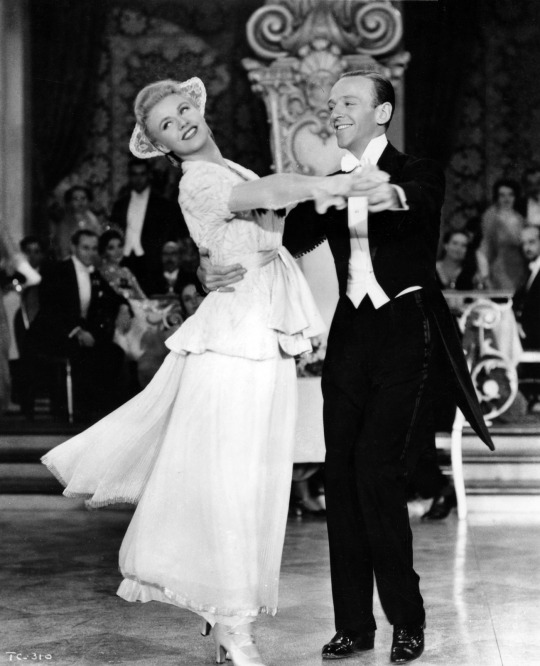
Ginger Rogers: Long paired with dance partner Fred Astaire, in 1939 Rogers co-starred with Astaire for the last time until 1949. The two starred in their only biographical picture together, THE STORY OF VERNON AND IRENE CASTLE, about a dancing pair that took the world by storm with new dance trends. While Rogers had starred in non-musicals prior to her partnership with Astaire, her role in BACHELOR MOTHER helped her transition to new characters. Starting in 1939, she began a 10 year stretch where she performed in comedies and dramas — none of which required ballroom dancing.
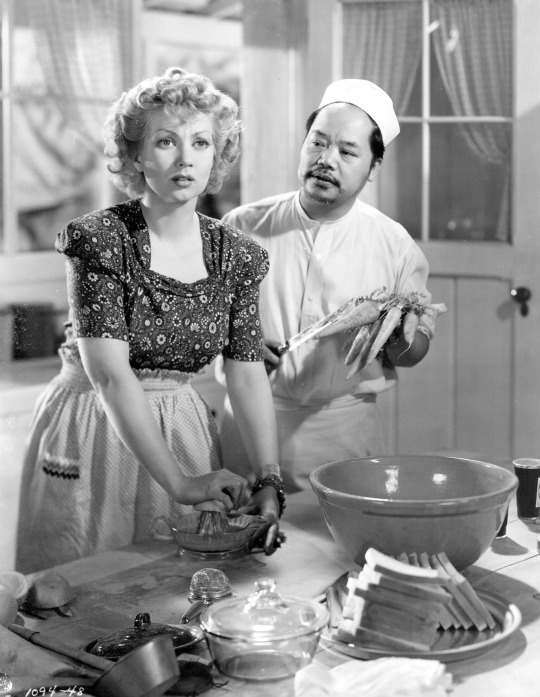
Ann Sothern: Ann Sothern started as a film extra in the late-1920s and slowly worked her way to credited roles and leading ladies in B pictures. After plugging along in thankless roles, the course of Sothern’s career changed in 1939. She left RKO, signed a contract with MGM and landed the plum role of Maisie Ravier in MAISIE. In MAISIE, Sothern plays a brassy vaudeville performer who finds herself stranded in Wyoming. She meets a cowboy, played by Robert Young, who begrudgingly lets her stay at his ranch. Sothern finds herself in over her head when Young’s boss and wife arrive and she gets mixed up in the wife’s extracurricular affair. This film spawned 9 other Maisie films where Sothern played the fast talking, unrefined dame with a heart of gold.
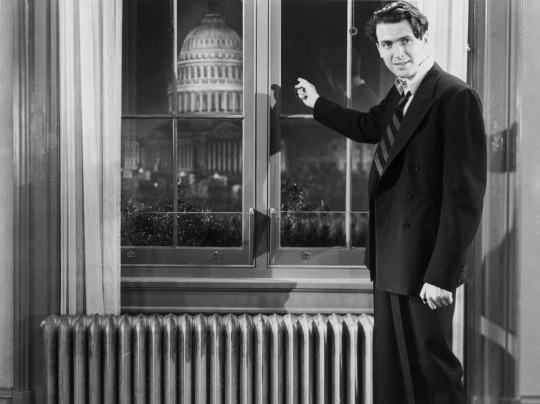
James Stewart: It’s hard to imagine a time when James Stewart wasn’t one of Hollywood’s top stars. But in 1939, he was still up-and-coming. Though he starred in other roles prior to 1939 (such as VIVACIOUS LADY and SHOPWORN ANGEL, both in 1938), Stewart’s role in MR. SMITH GOES TO WASHINGTON solidified him as a star. In the film, Stewart plays patriotic but inexperienced Jefferson Smith who is appointed a U.S. Senator. While the corrupt politicians hope Smith will be a “Yes” man, he fights for what he believes is right.
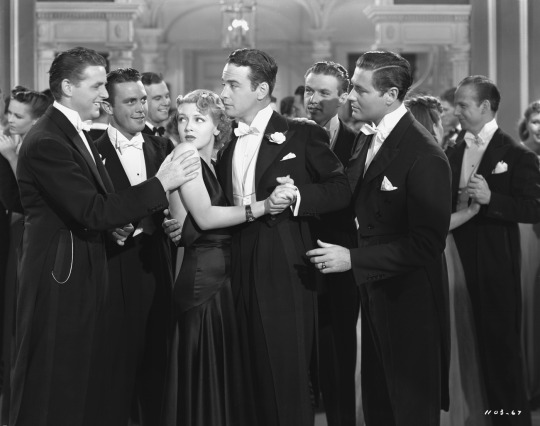
Lana Turner: In 1939, Lana Turner starred in THESE GLAMOUR GIRLS, which was her first starring film role and her first film where the storyline focused primarily on her character. In the film, Turner plays a “taxi dancer” who is asked to a spring college dance by a rich, drunk college boy played by Lew Ayres. Turner takes him seriously and arrives at the college along with all of the dates—including Ayres’s other date. Turner’s character isn’t exactly welcomed with open arms by Ayres or the other snooty society college boys and girls. After this film, Turner received top billing and was swathed in glamour for the next 15 years until she left Metro-Goldwyn-Mayer in 1956.

John Wayne: John Wayne had been appearing in films since 1926. While he made a name for himself as a silver screen cowboy, those films were low-budget Westerns that didn’t run much longer than an hour. But in 1939, Wayne was cast in a role that made him the star he is known as today: Ringo Kid in STAGECOACH. Directed by John Ford, the film follows a group of people riding on a stagecoach dealing with their own issues. Wayne’s character of Ringo Kid is an outlaw who has escaped from prison to get revenge for the deaths of his father and brother.
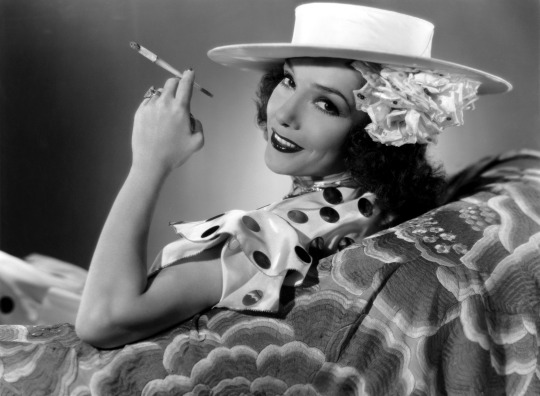
Lupe Velez: Lupe Velez found success in Hollywood in silent films and early talkies. But by the late-1930s, her career was waning. Velez returned home to Mexico to star in LA ZANDUNGA (1938) and was planning on signing a film contract in Mexico when she received an offer from RKO to star in THE GIRL FROM MEXICO. In the film, Velez plays Carmelita Fuentes, a Mexican singer who Donald Woods brings back to the United States to perform for an advertising client’s radio show. Woods and Velez’s characters fall in love and the two decide to marry. What was supposed to be a standalone B-movie spawned a successful film series, revitalizing Velez’s career. She played the “Mexican Spitfire” in eight comedies from 1939 to 1943. The film series also exhibited an early representation of interracial marriage.
#Ginger Rogers#James Stewart#Olivia de Havilland#Lana Turner#Lupe Velez#Hedy Lamarr#Basil Rathbone#David Niven#Ann Sothern#Greer Garson#John Wayne#Jessica Pickens#TCM#Turner Classic Movies
296 notes
·
View notes